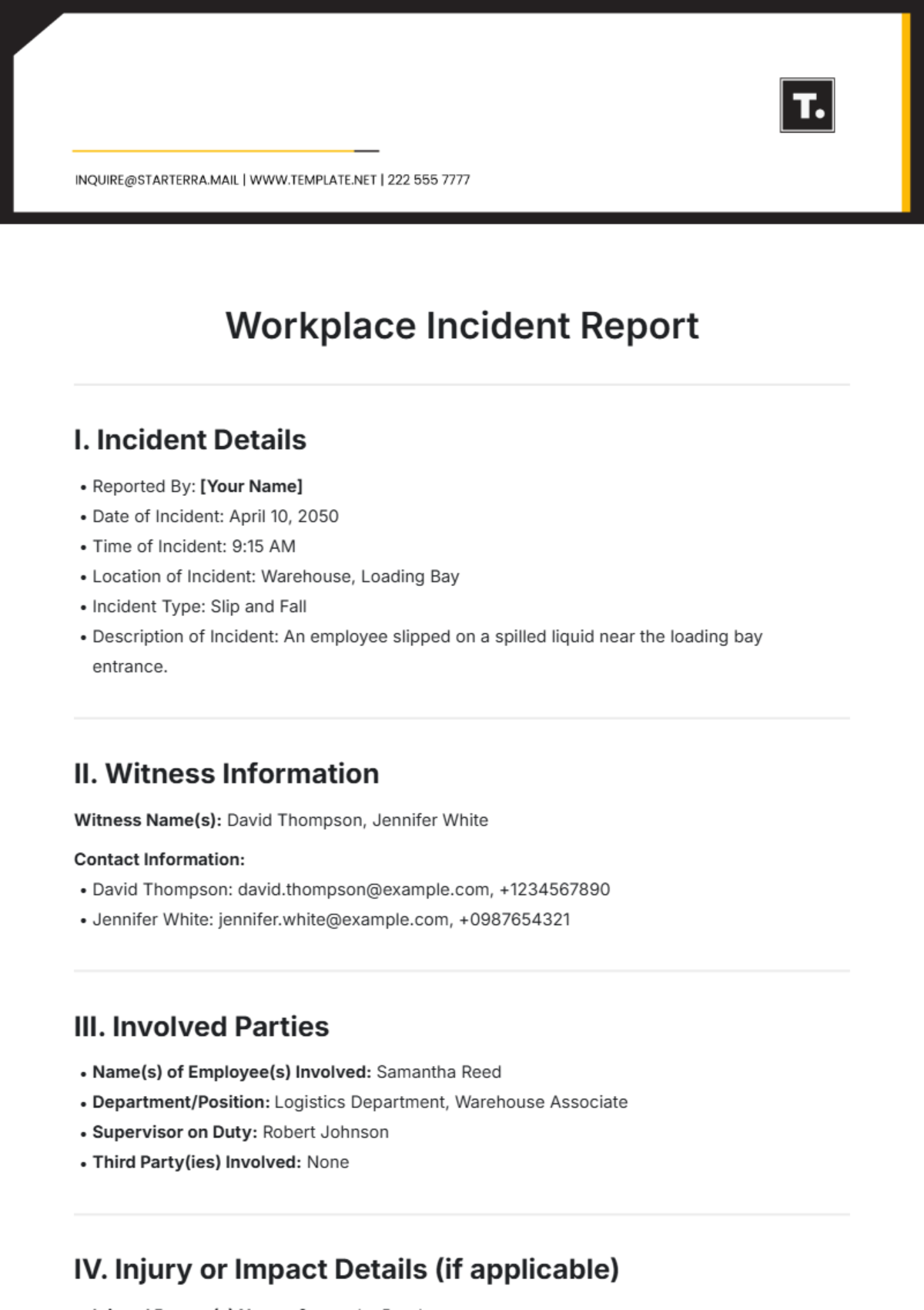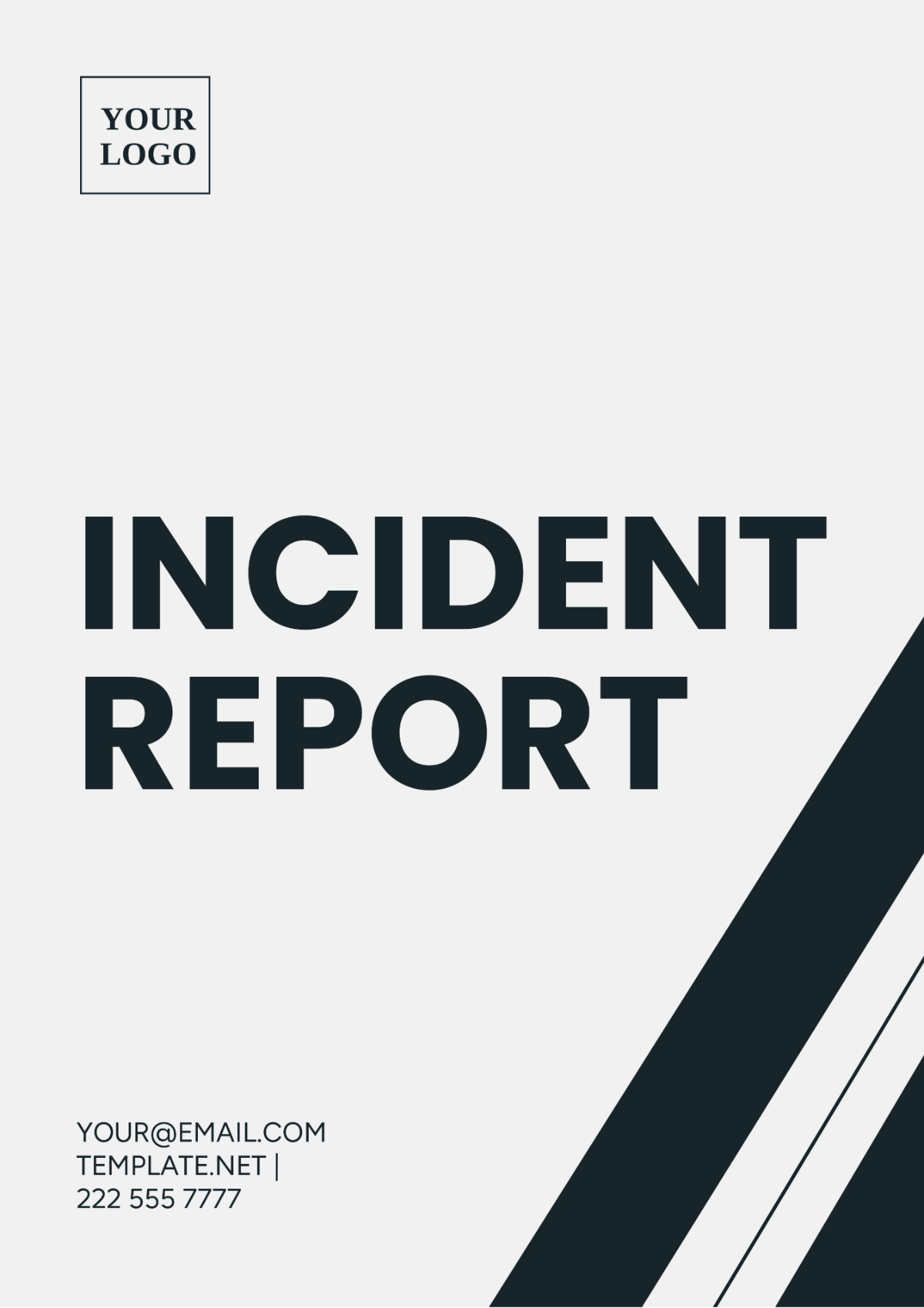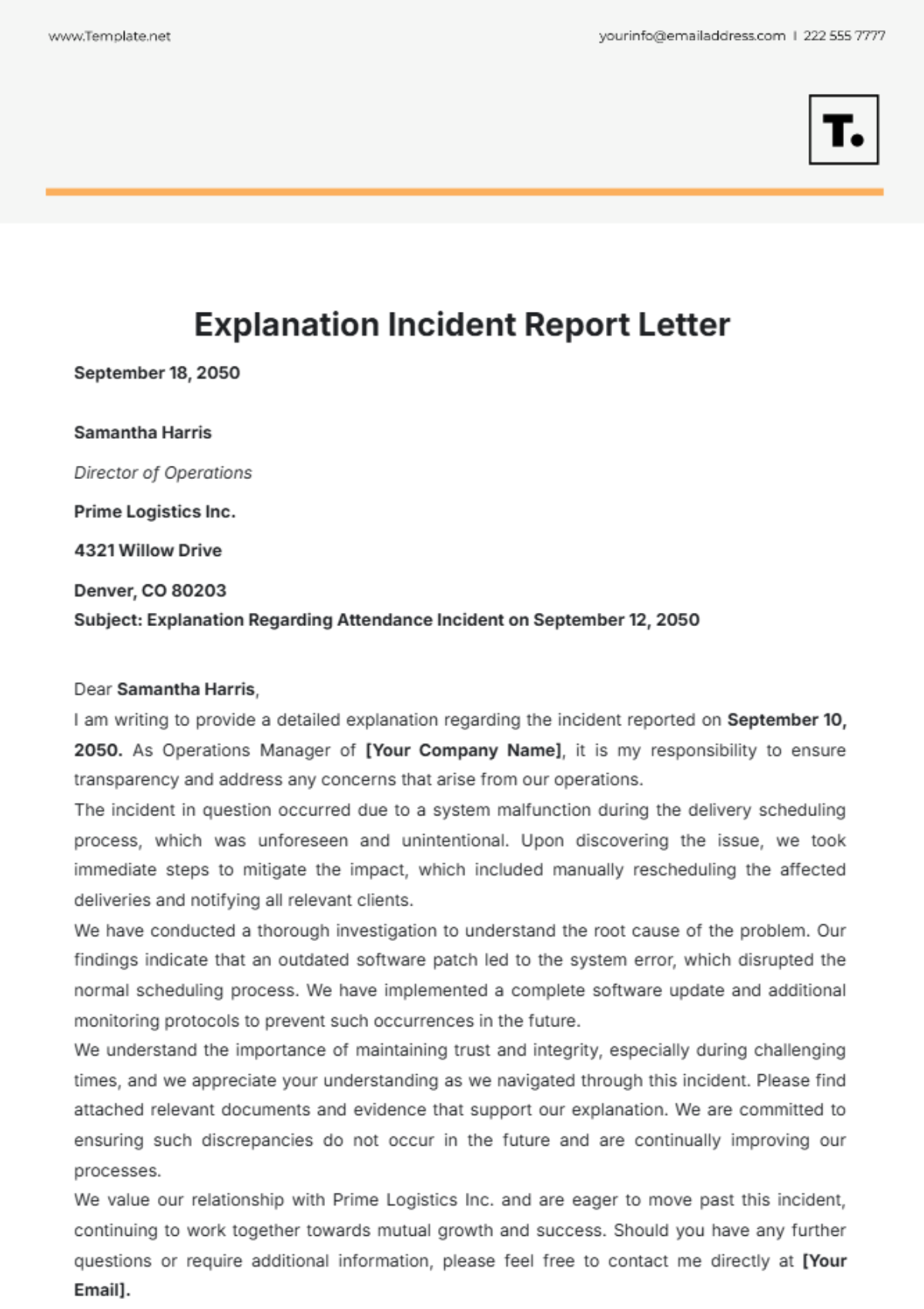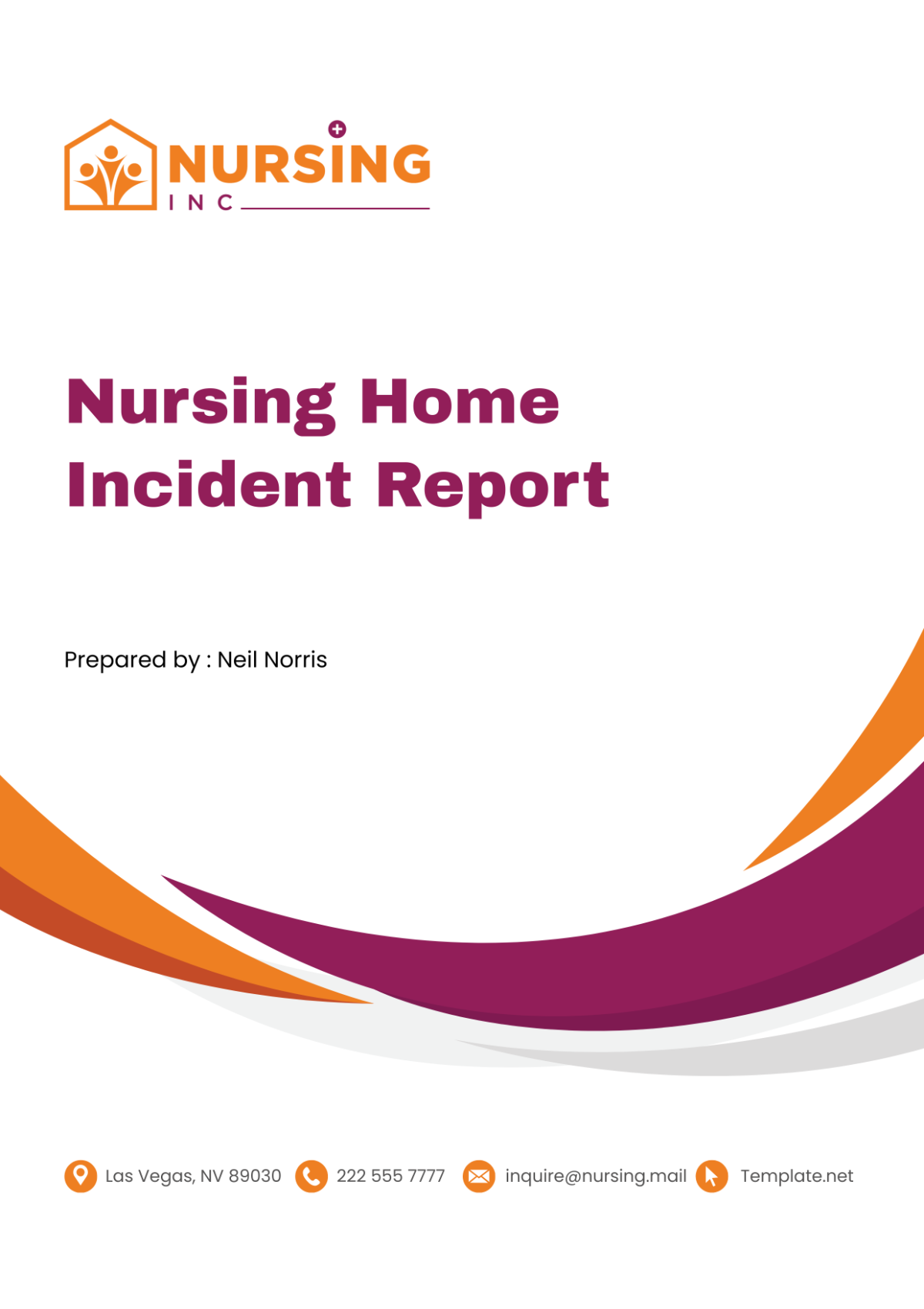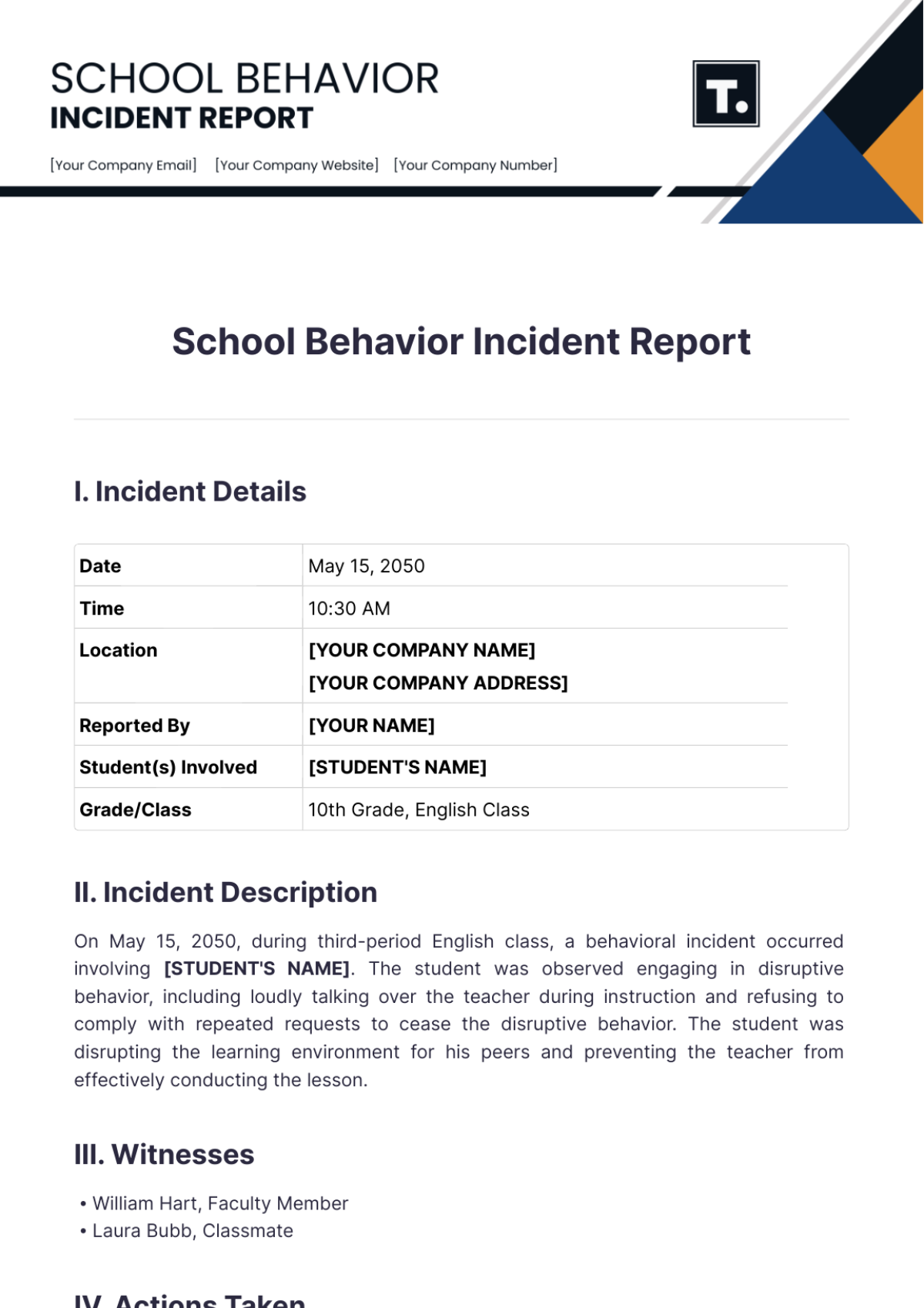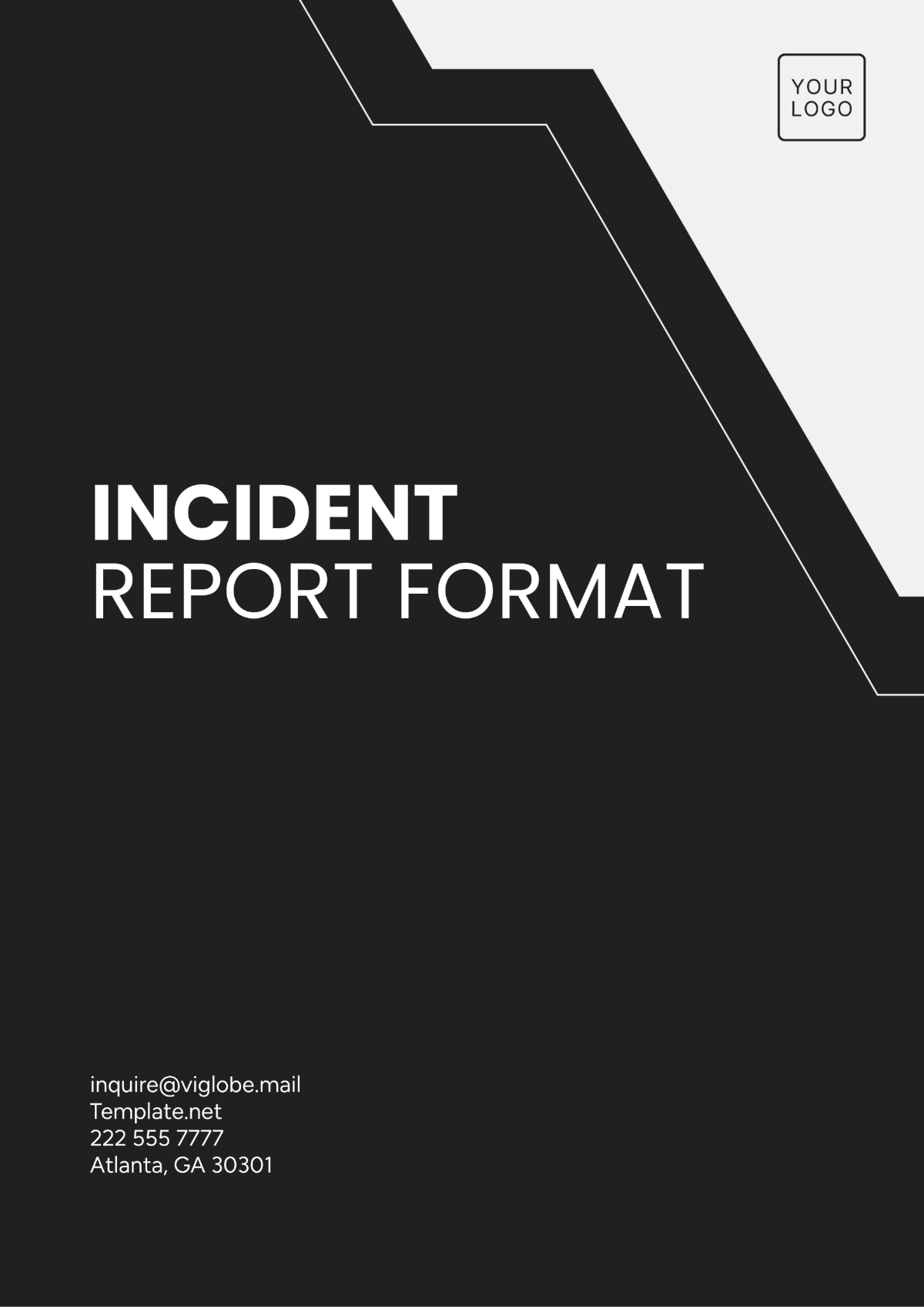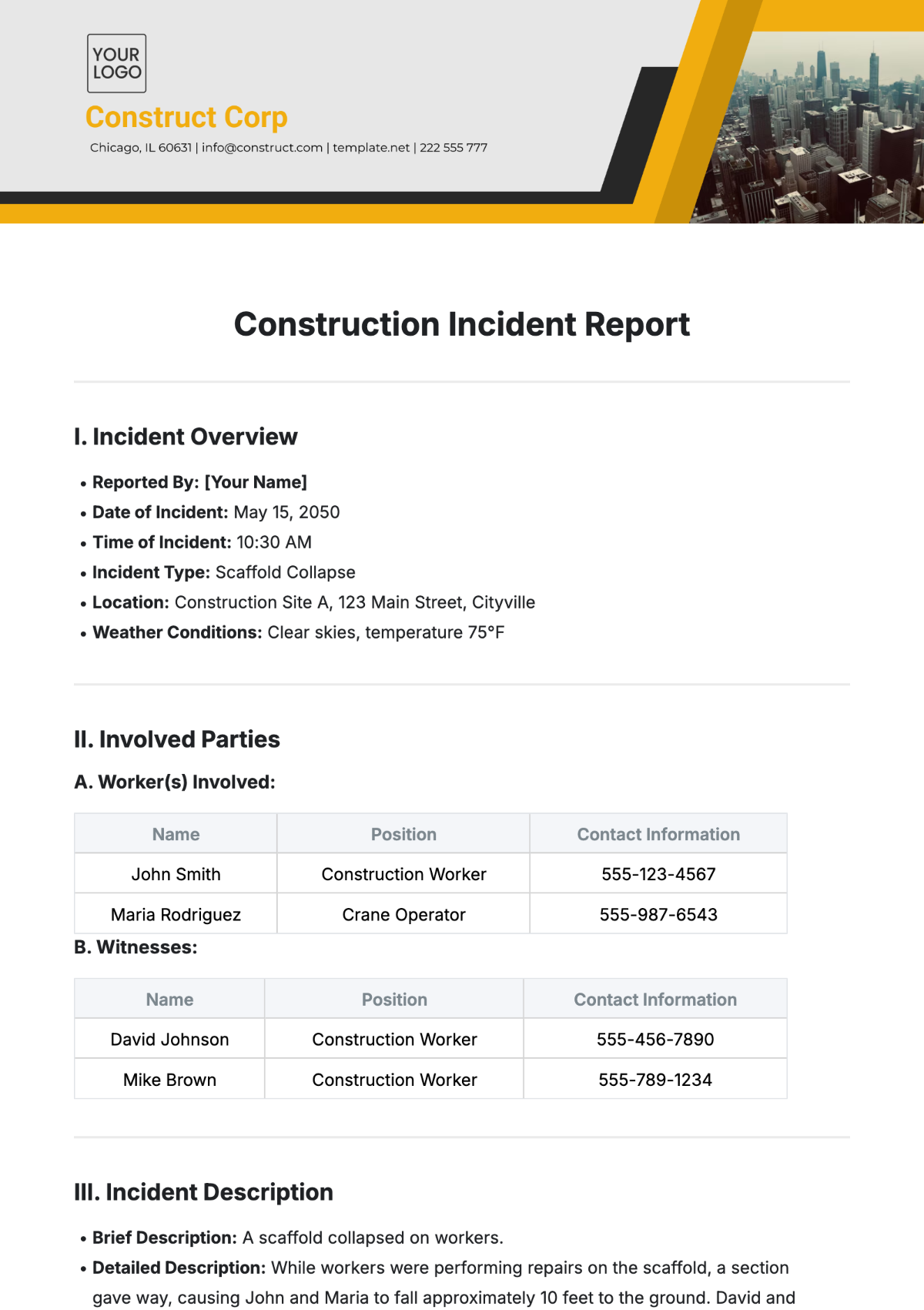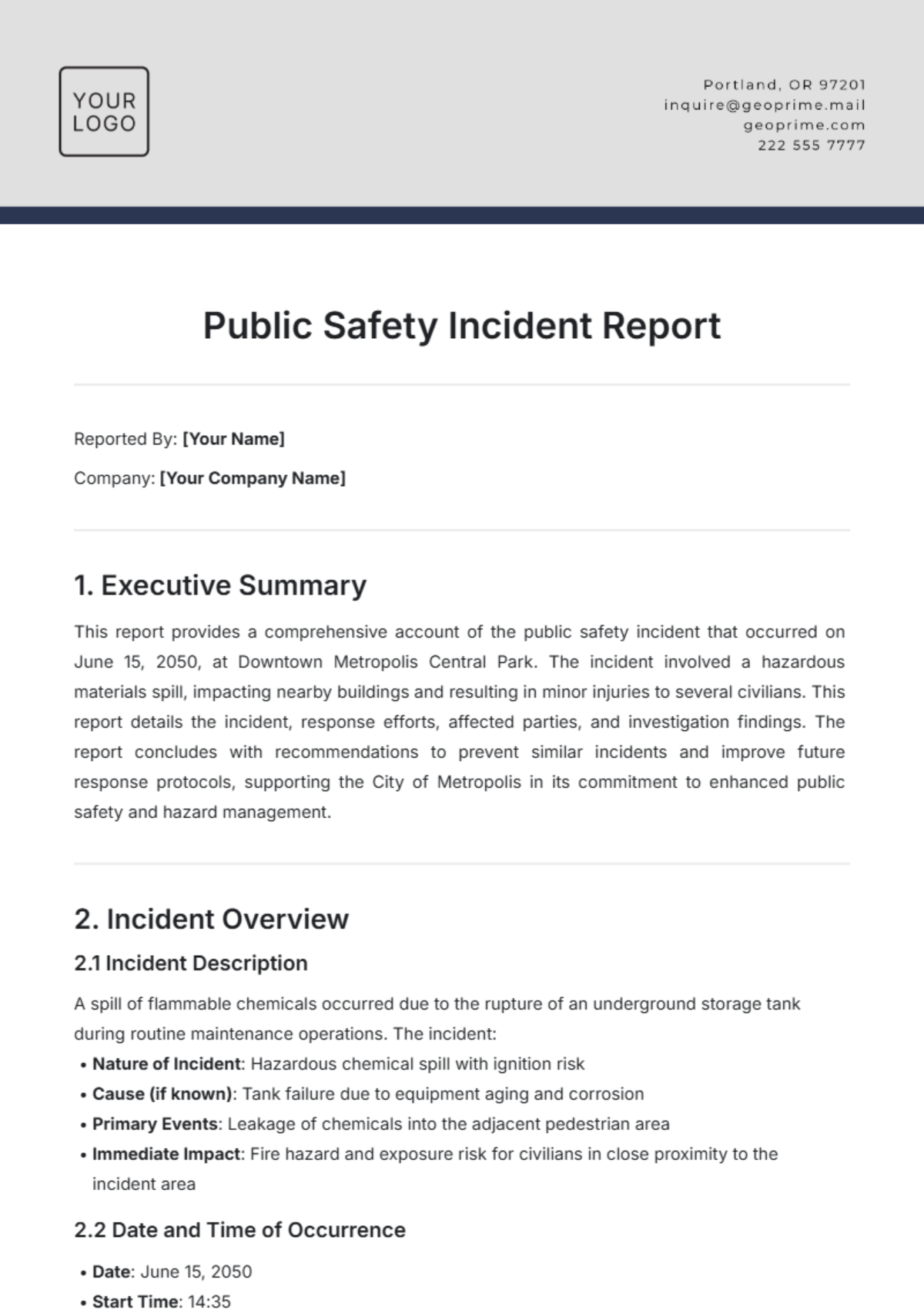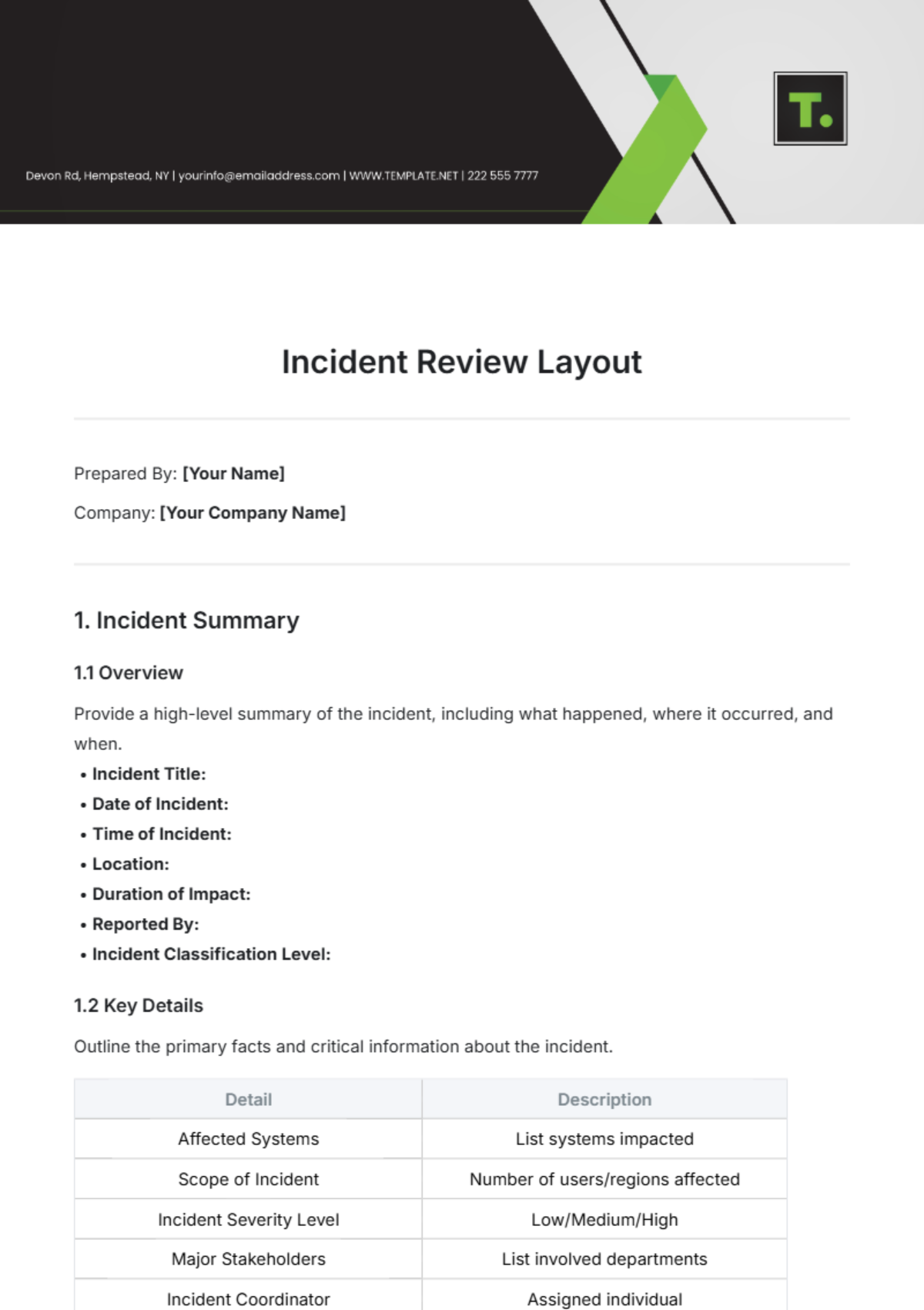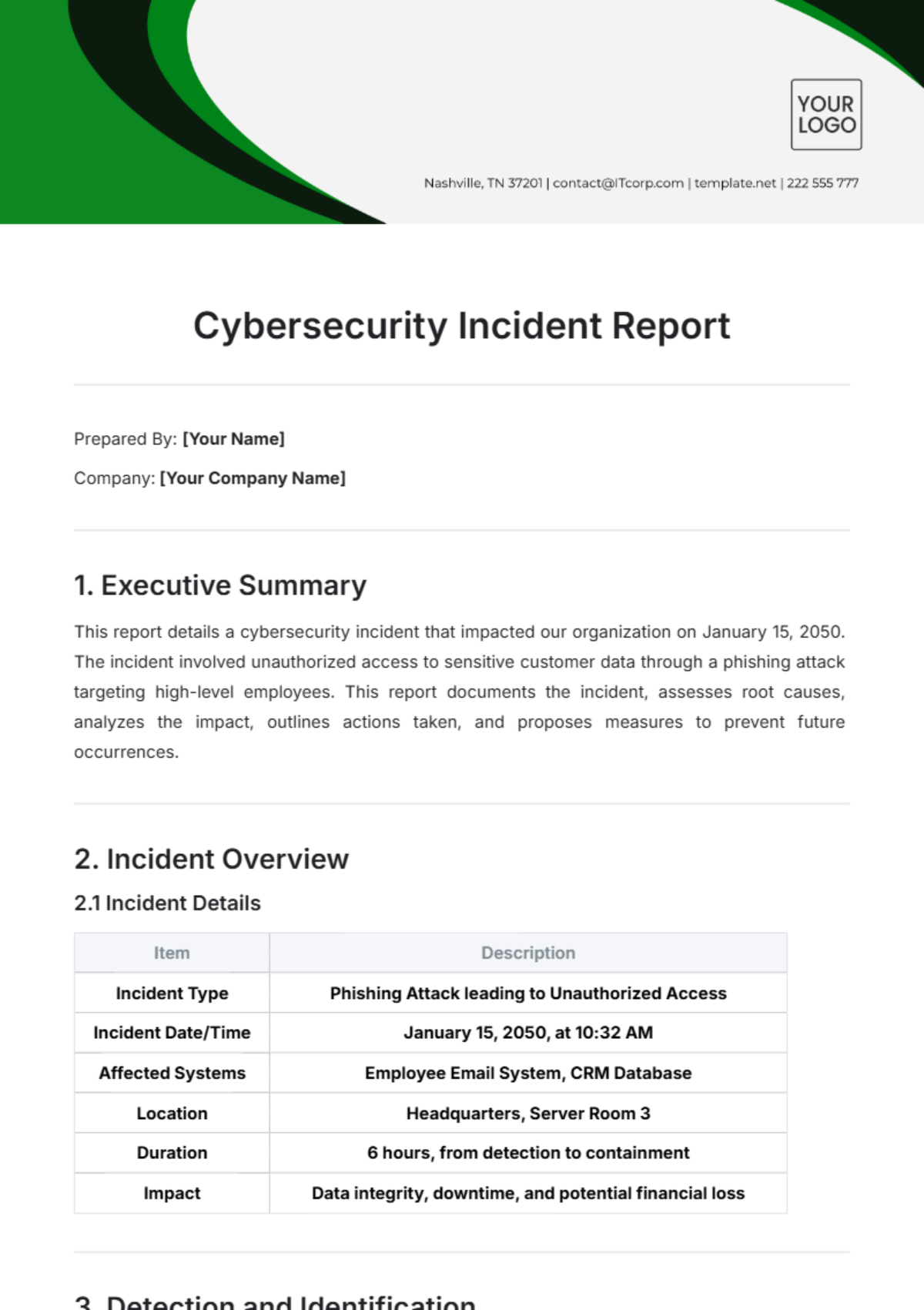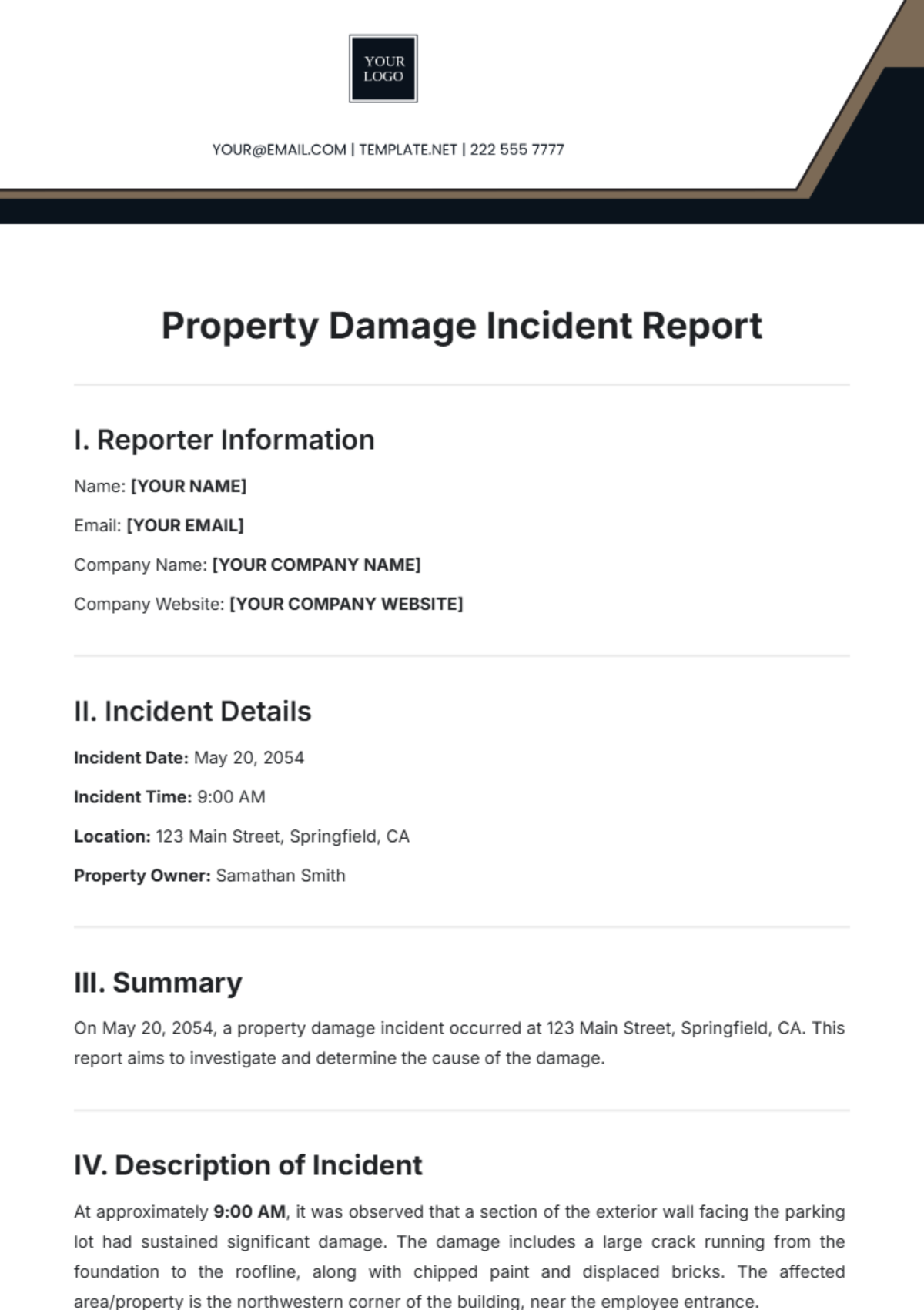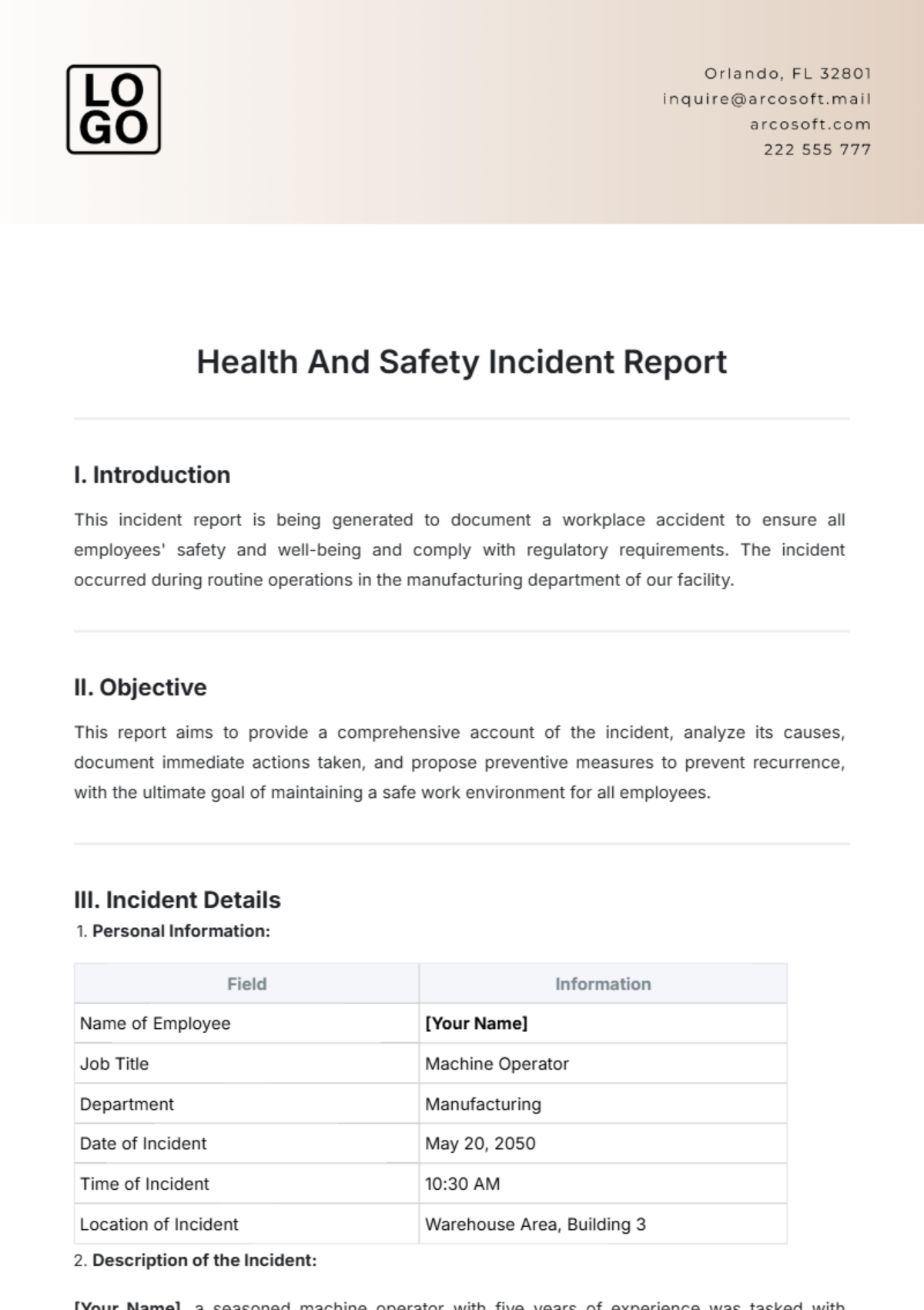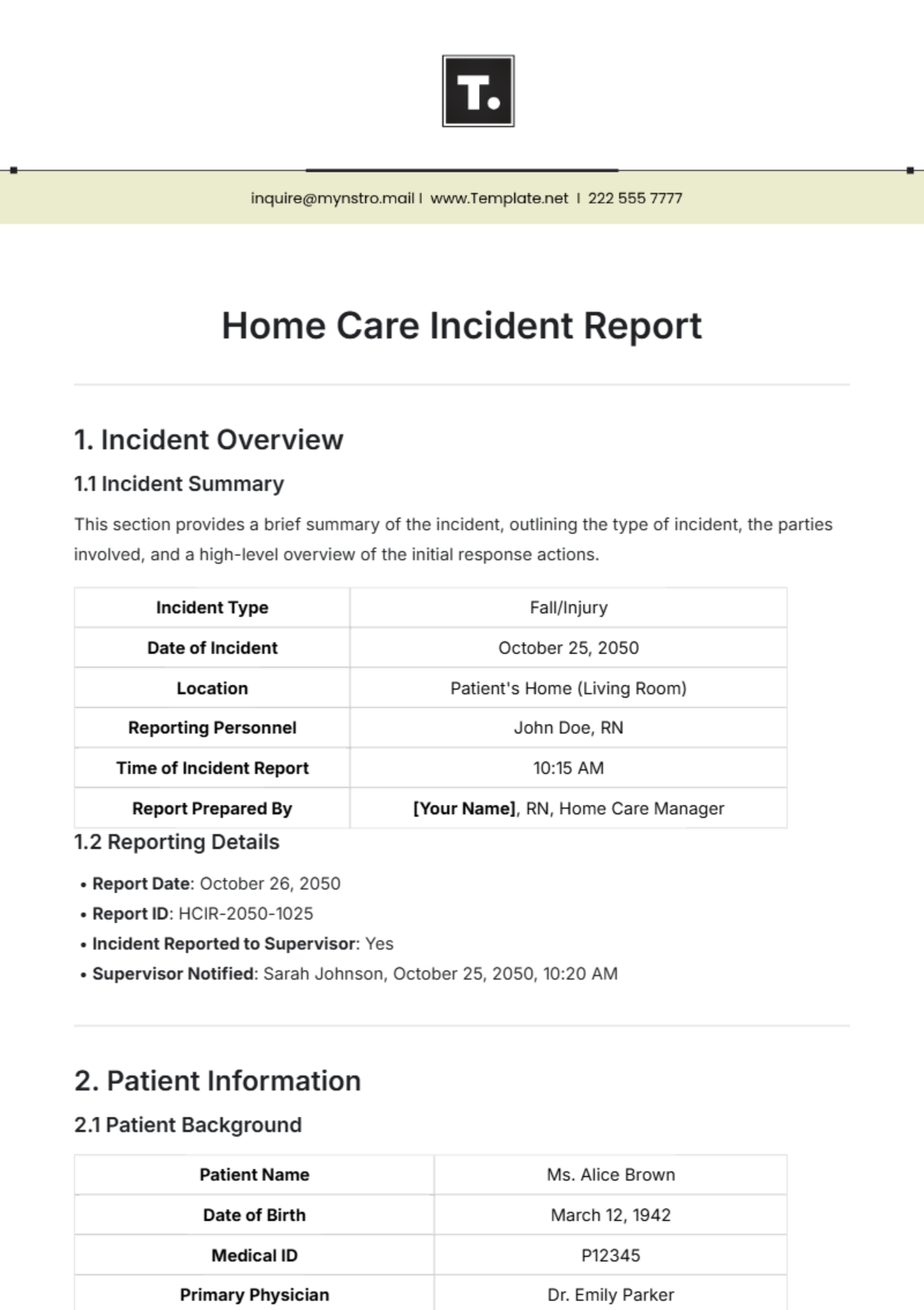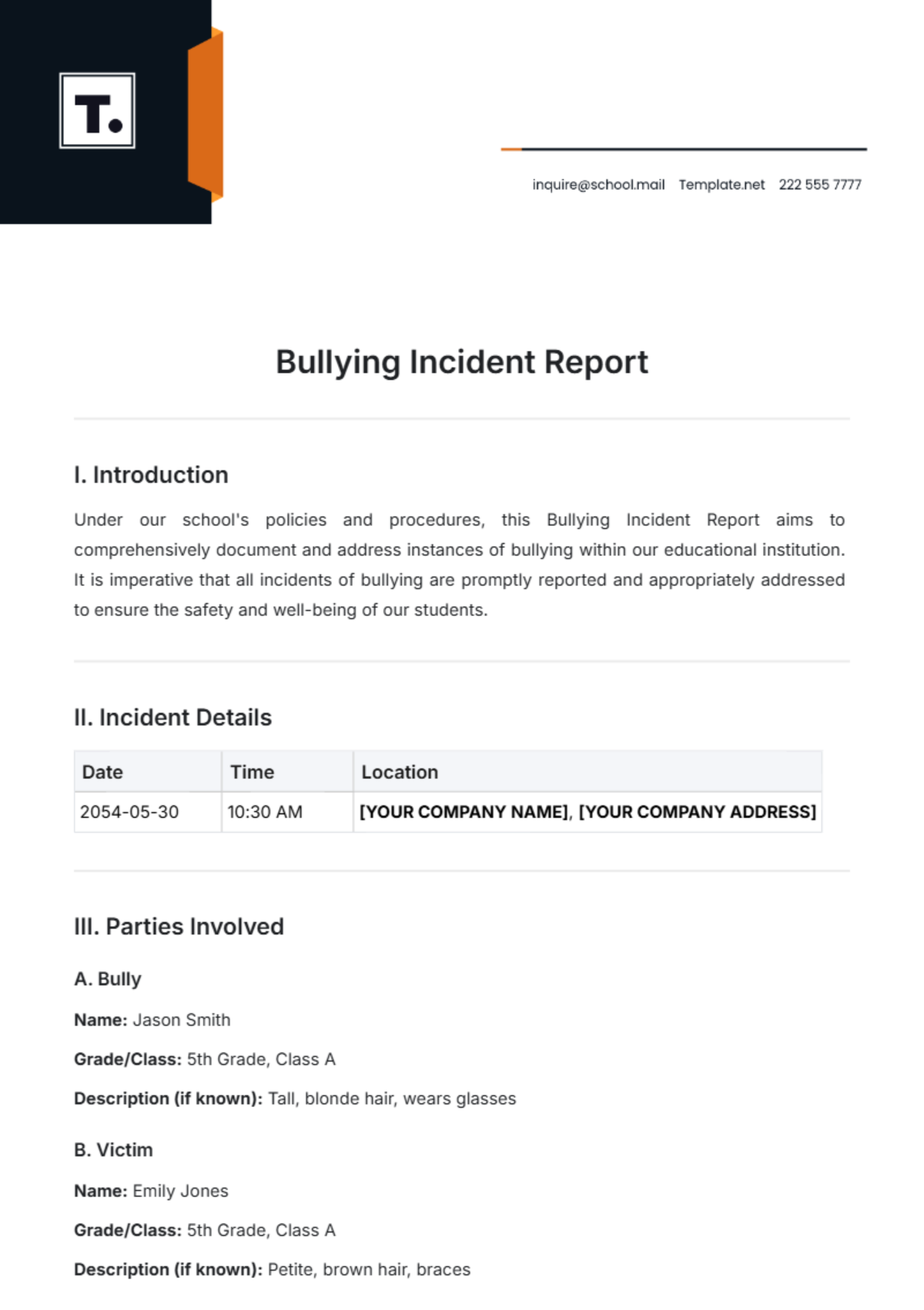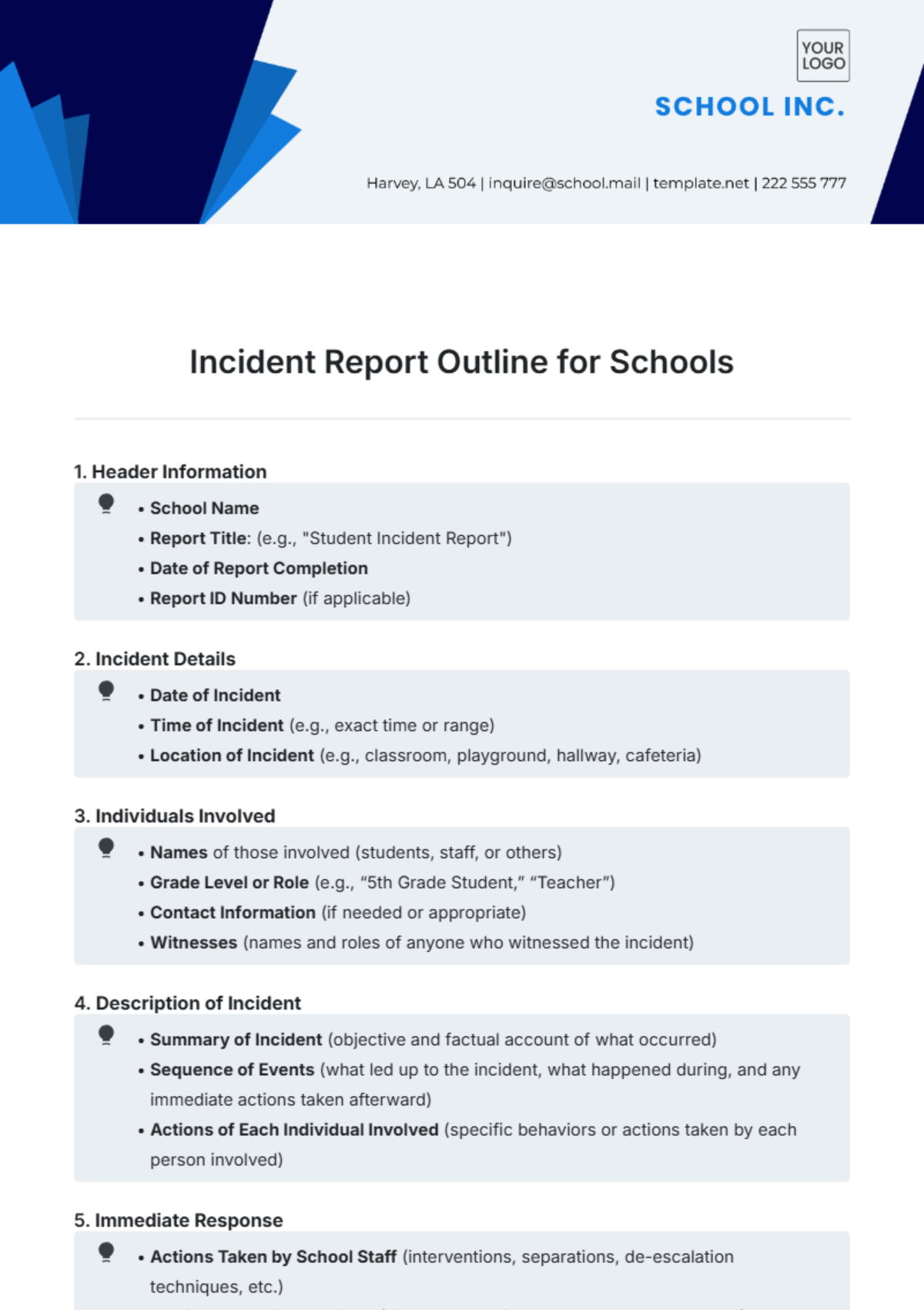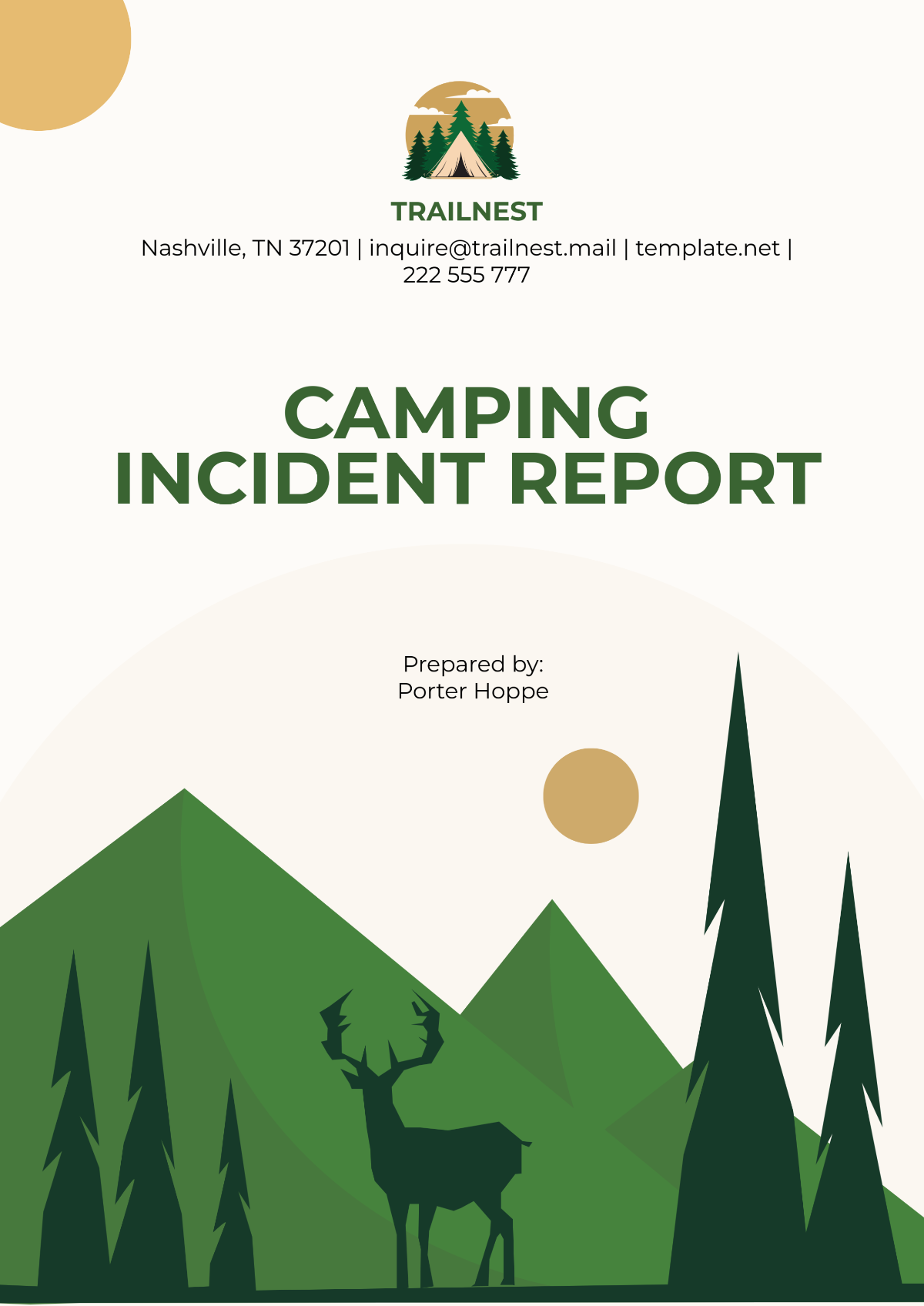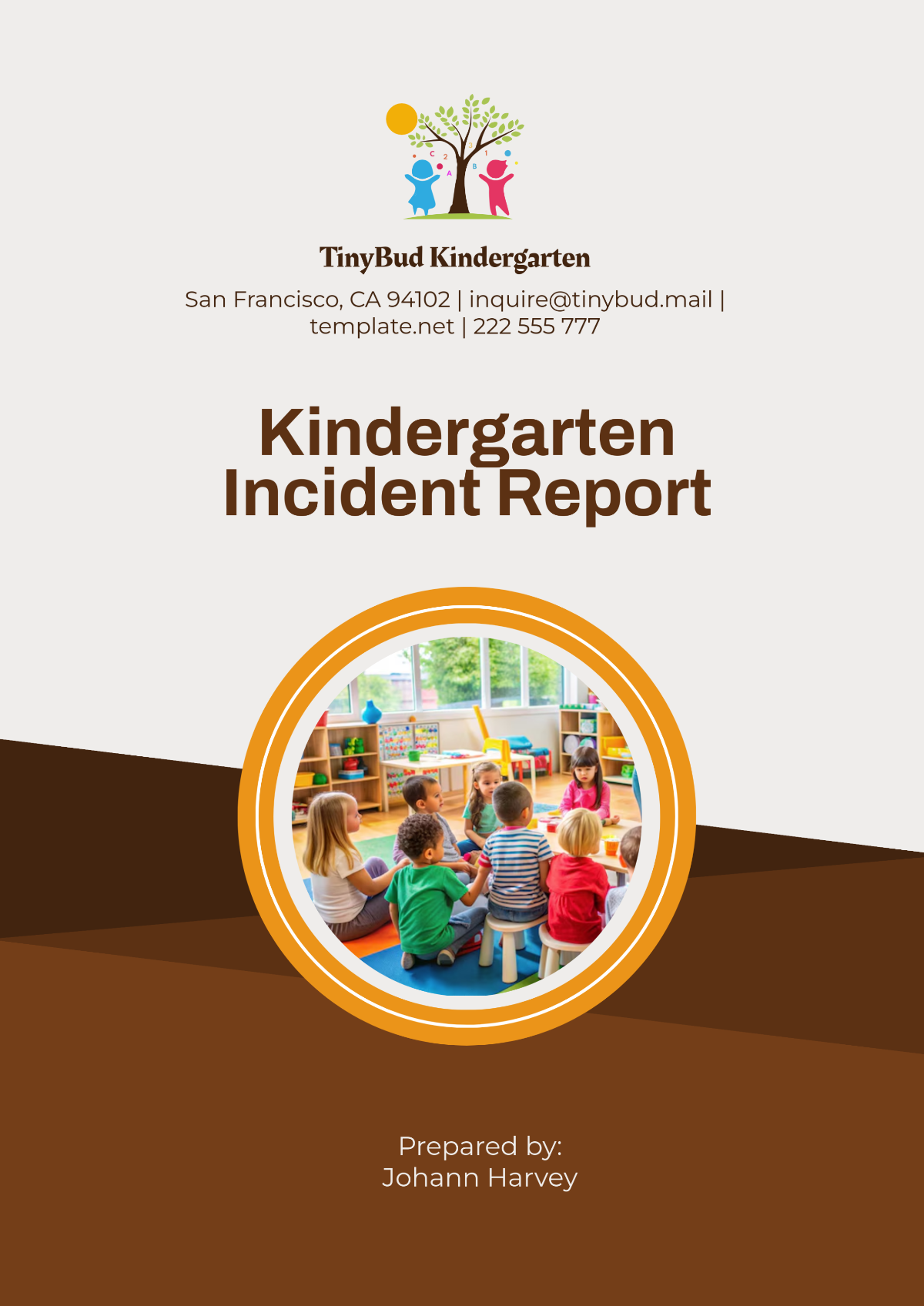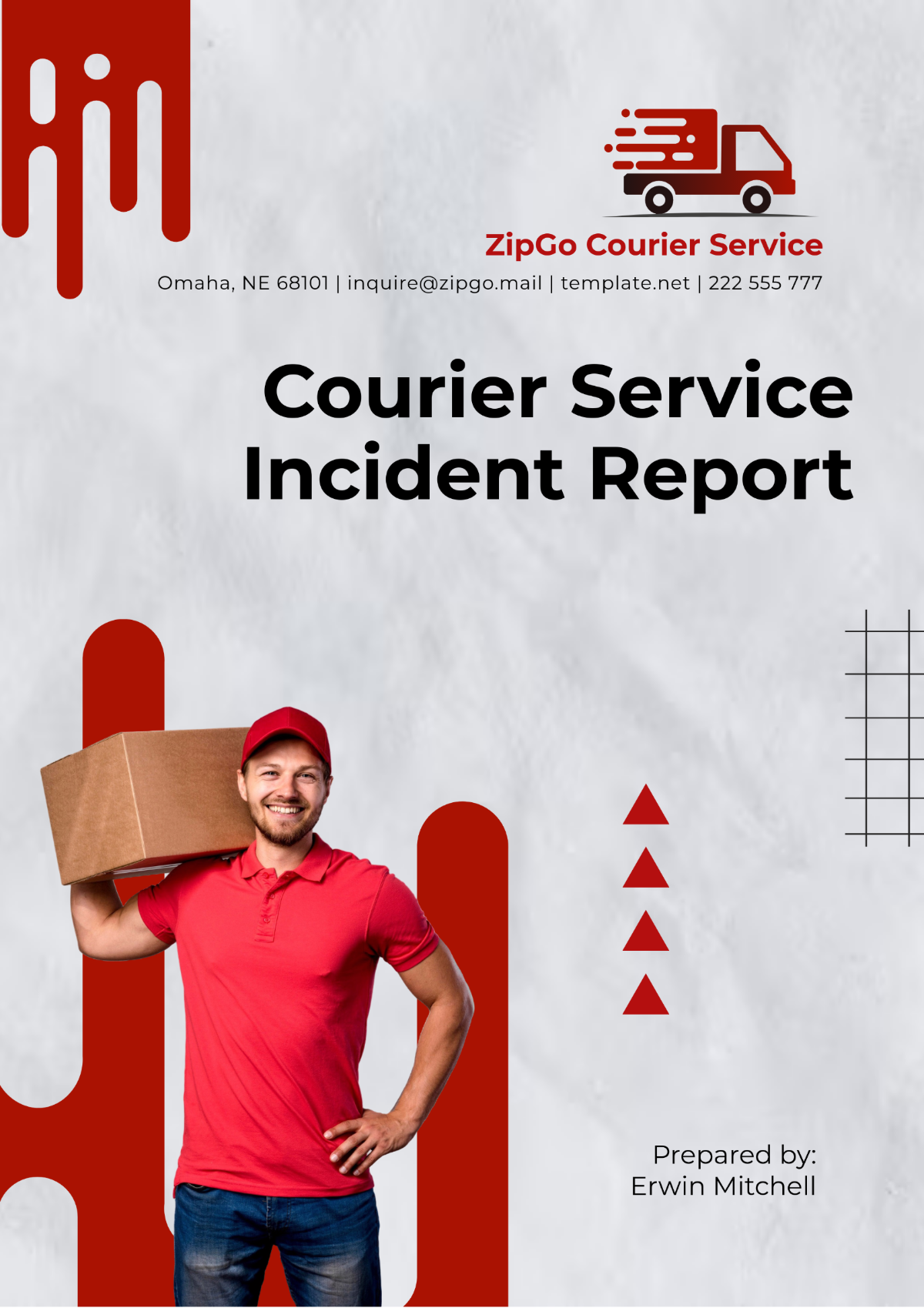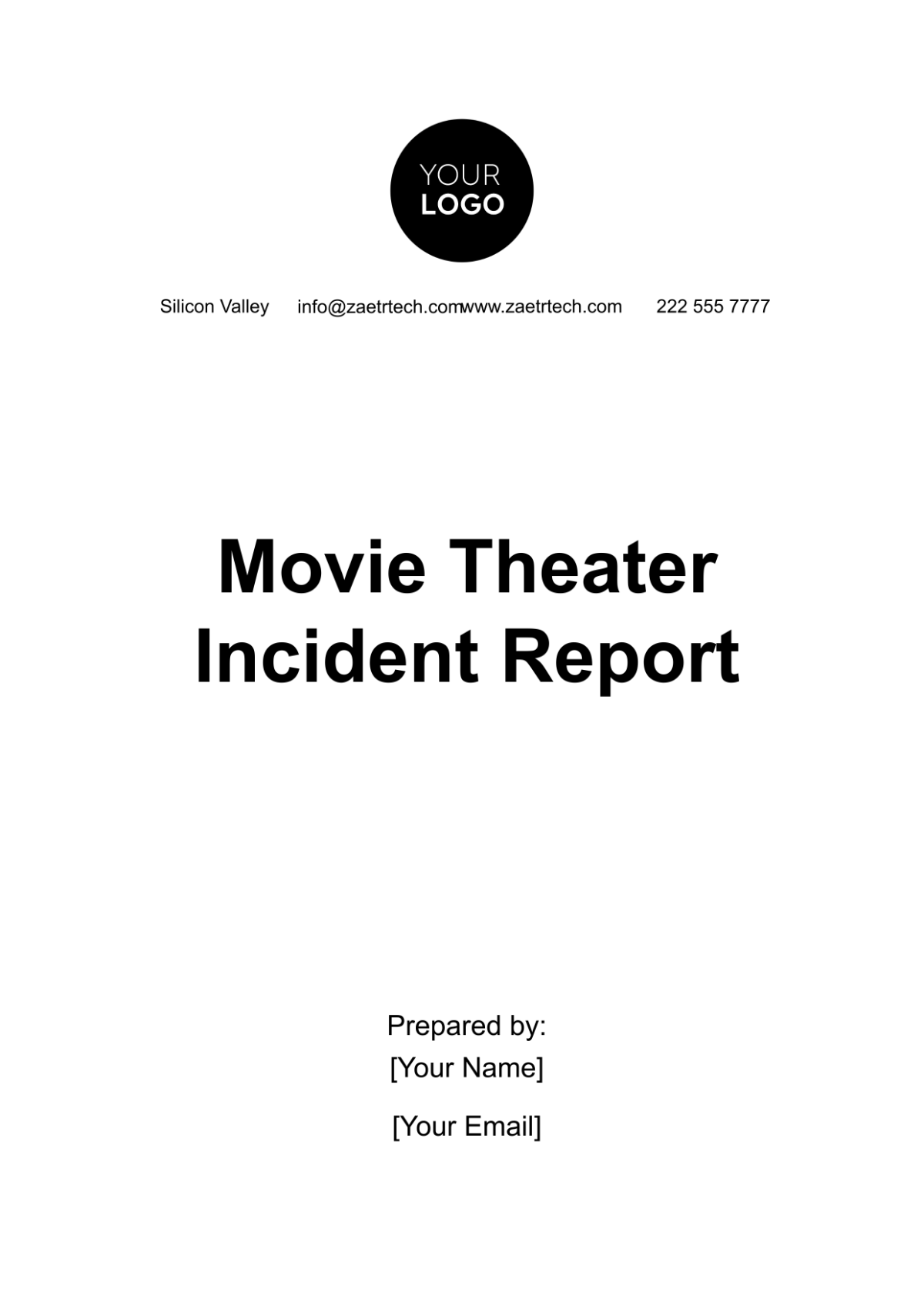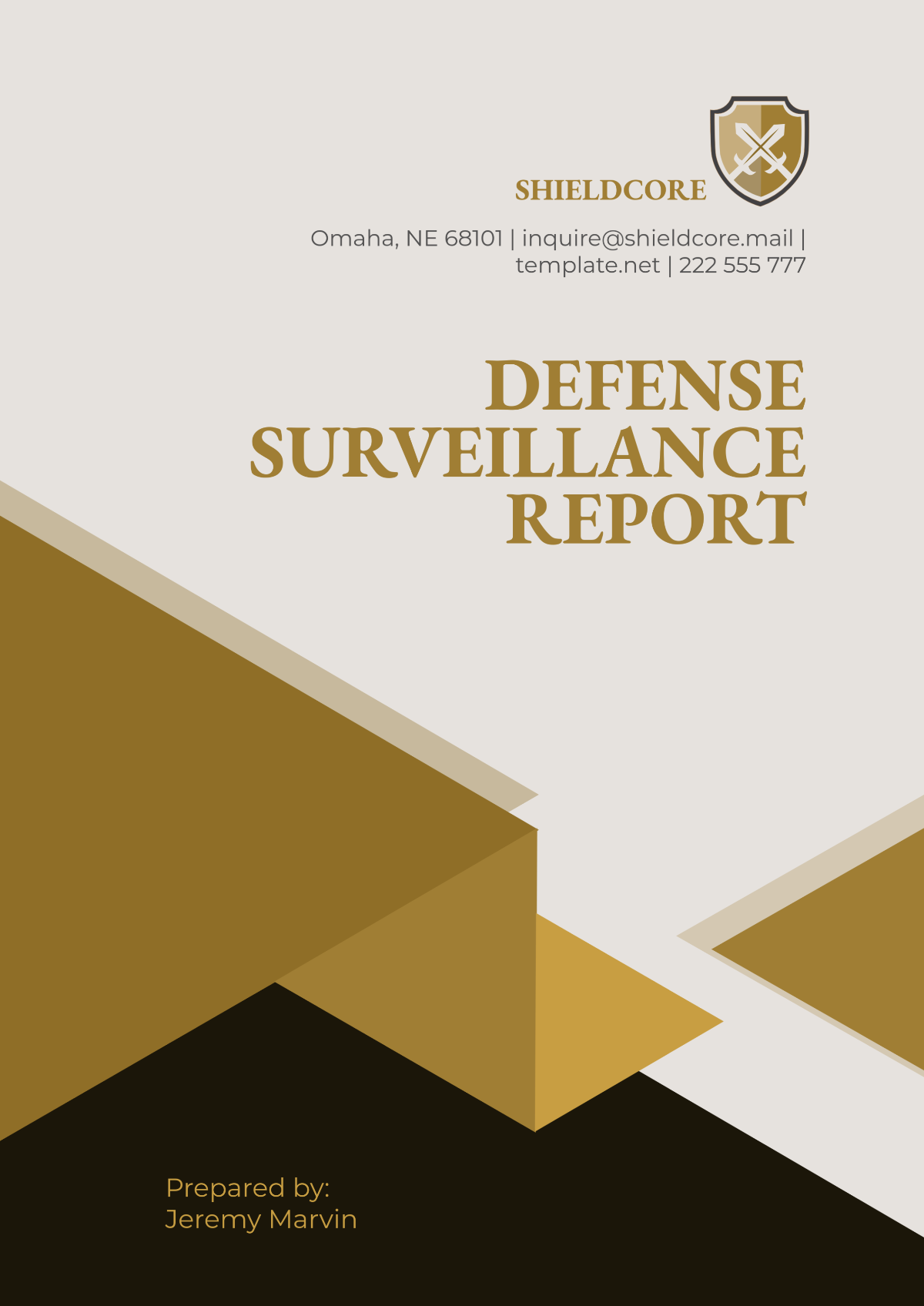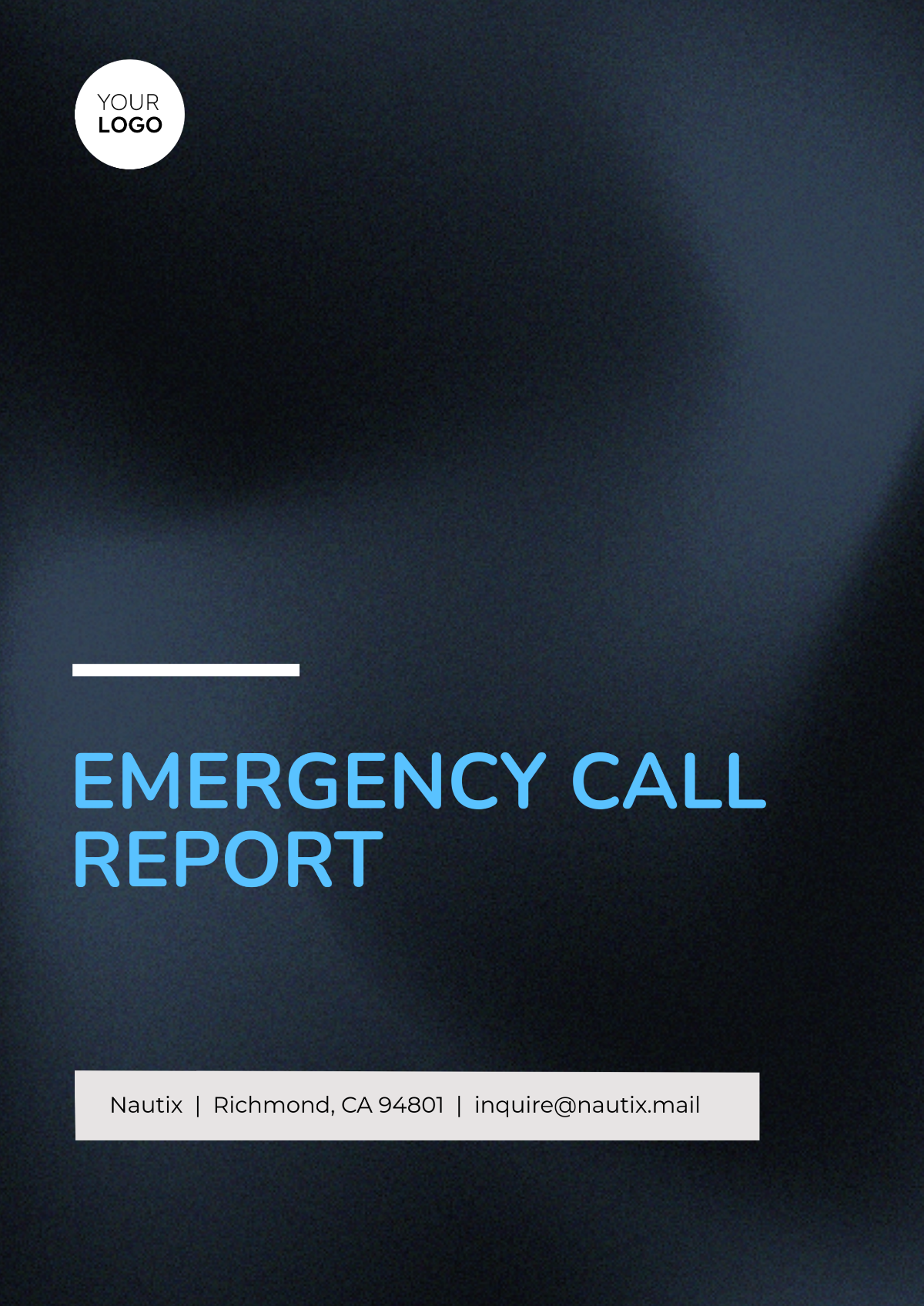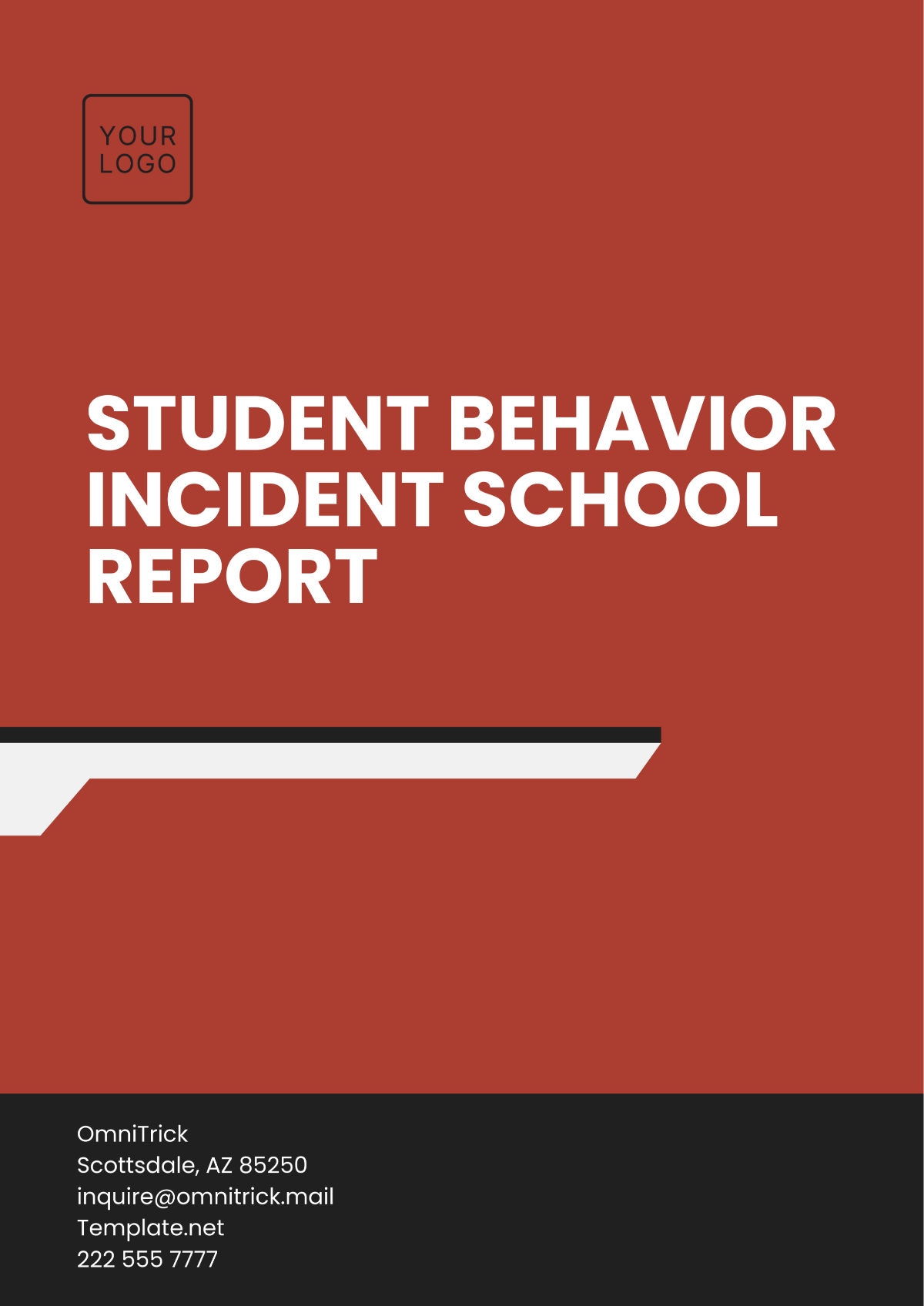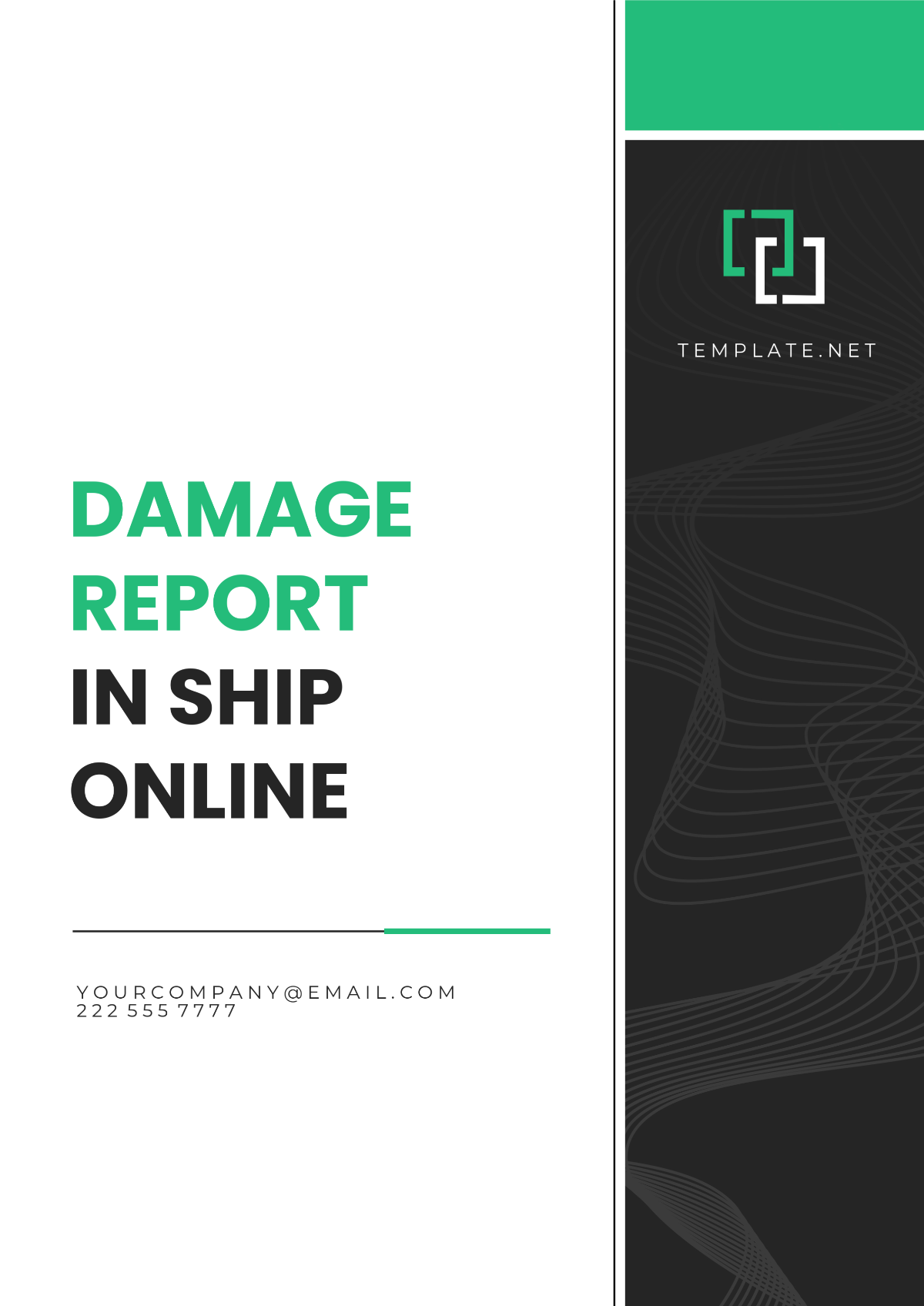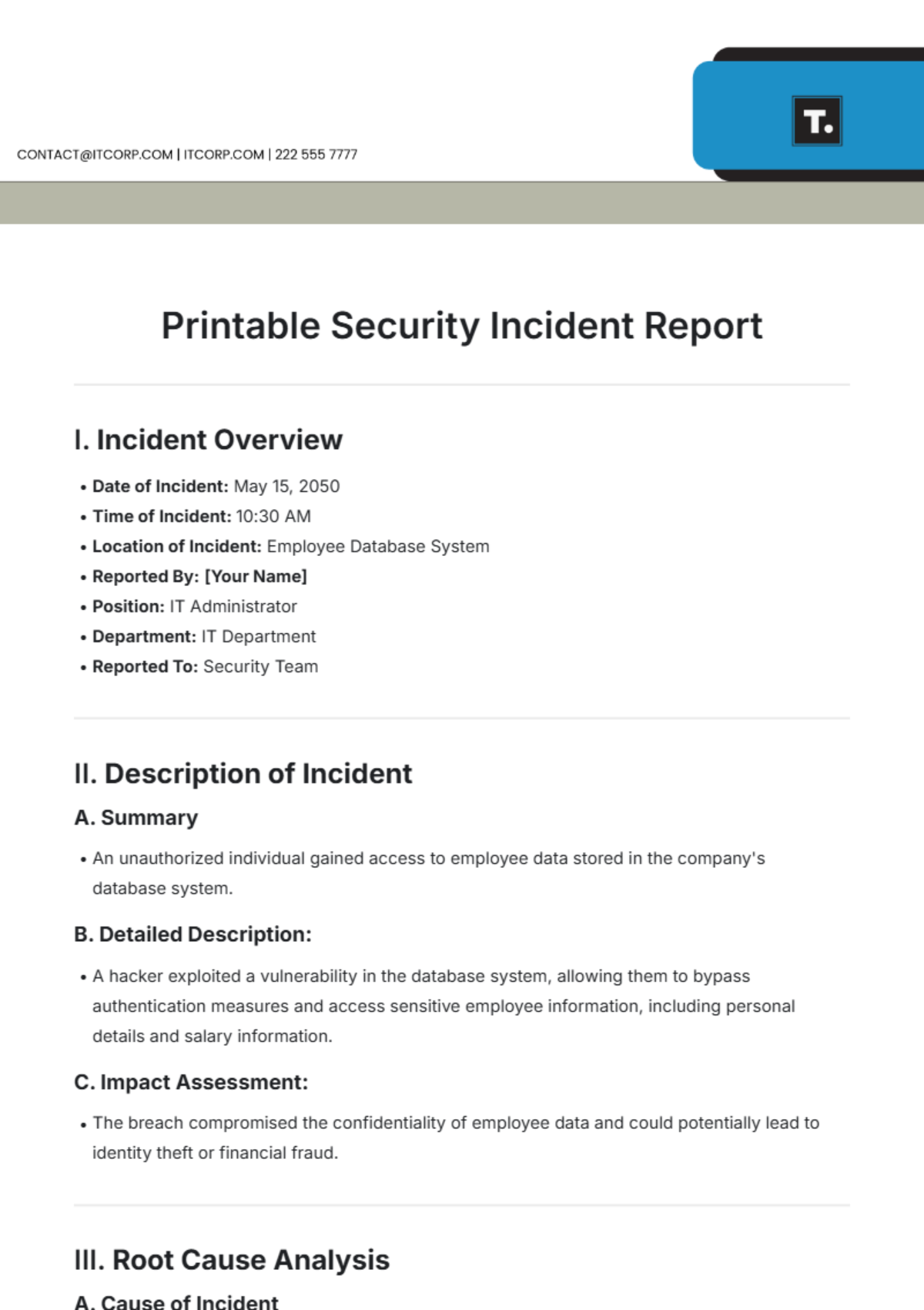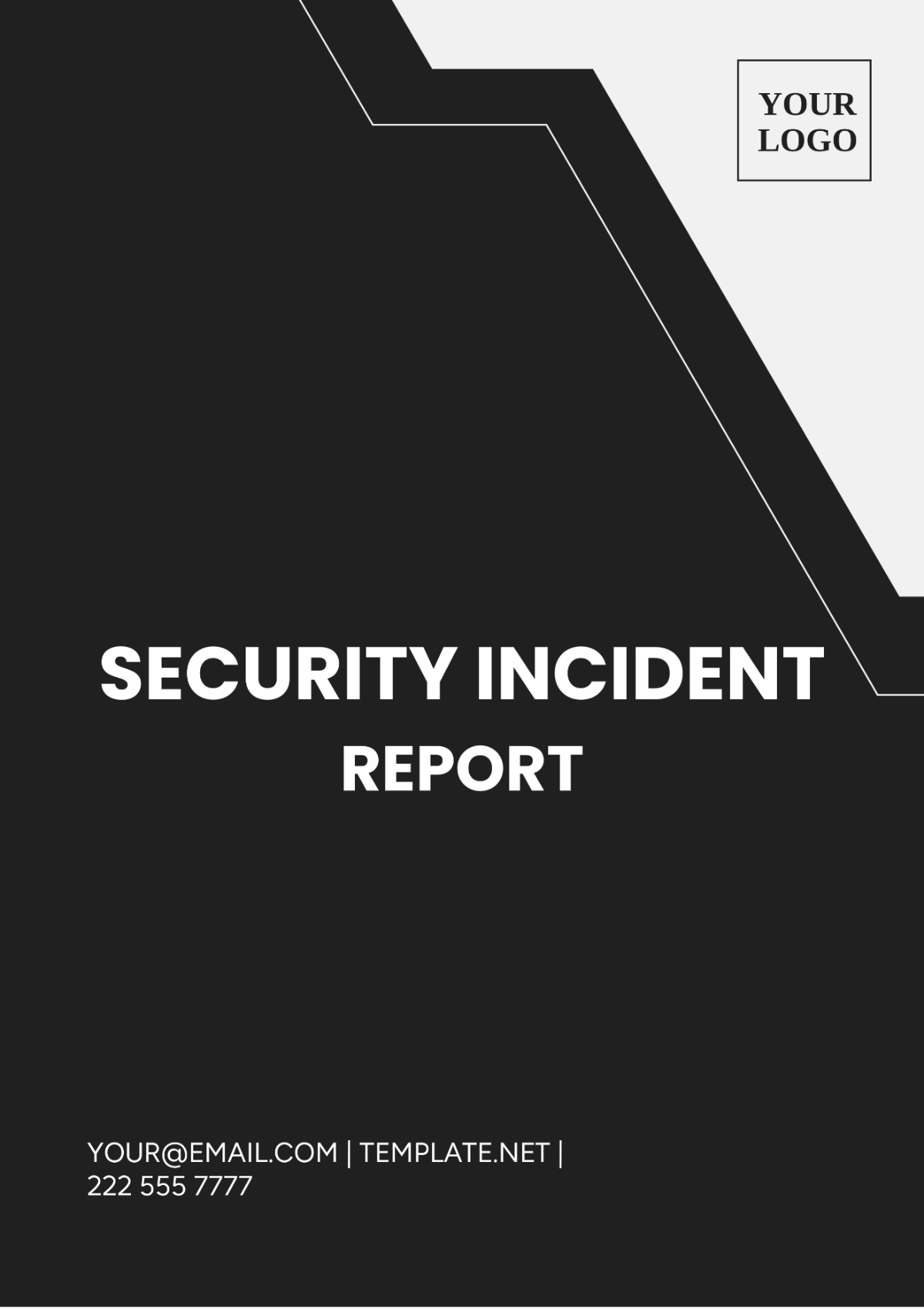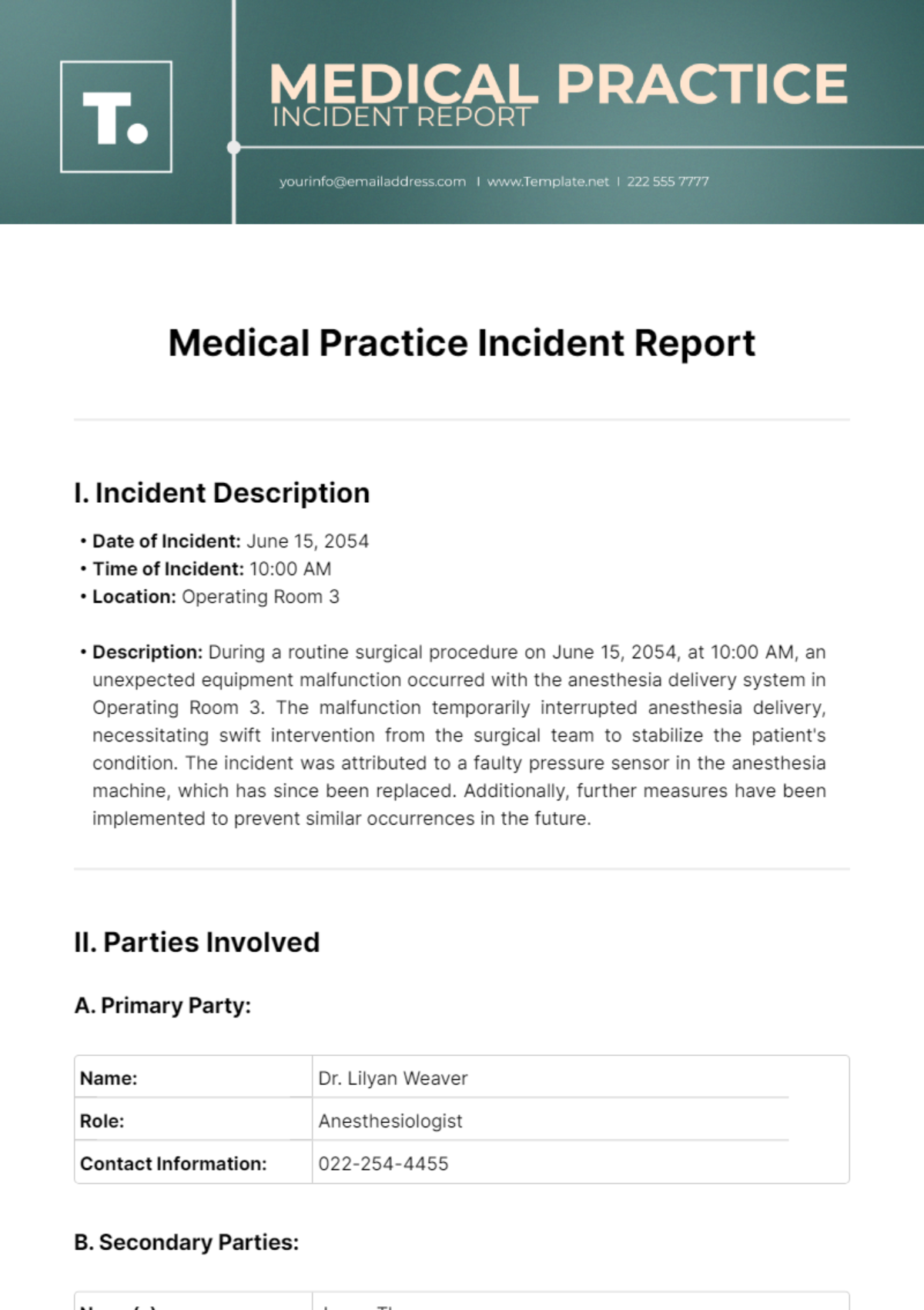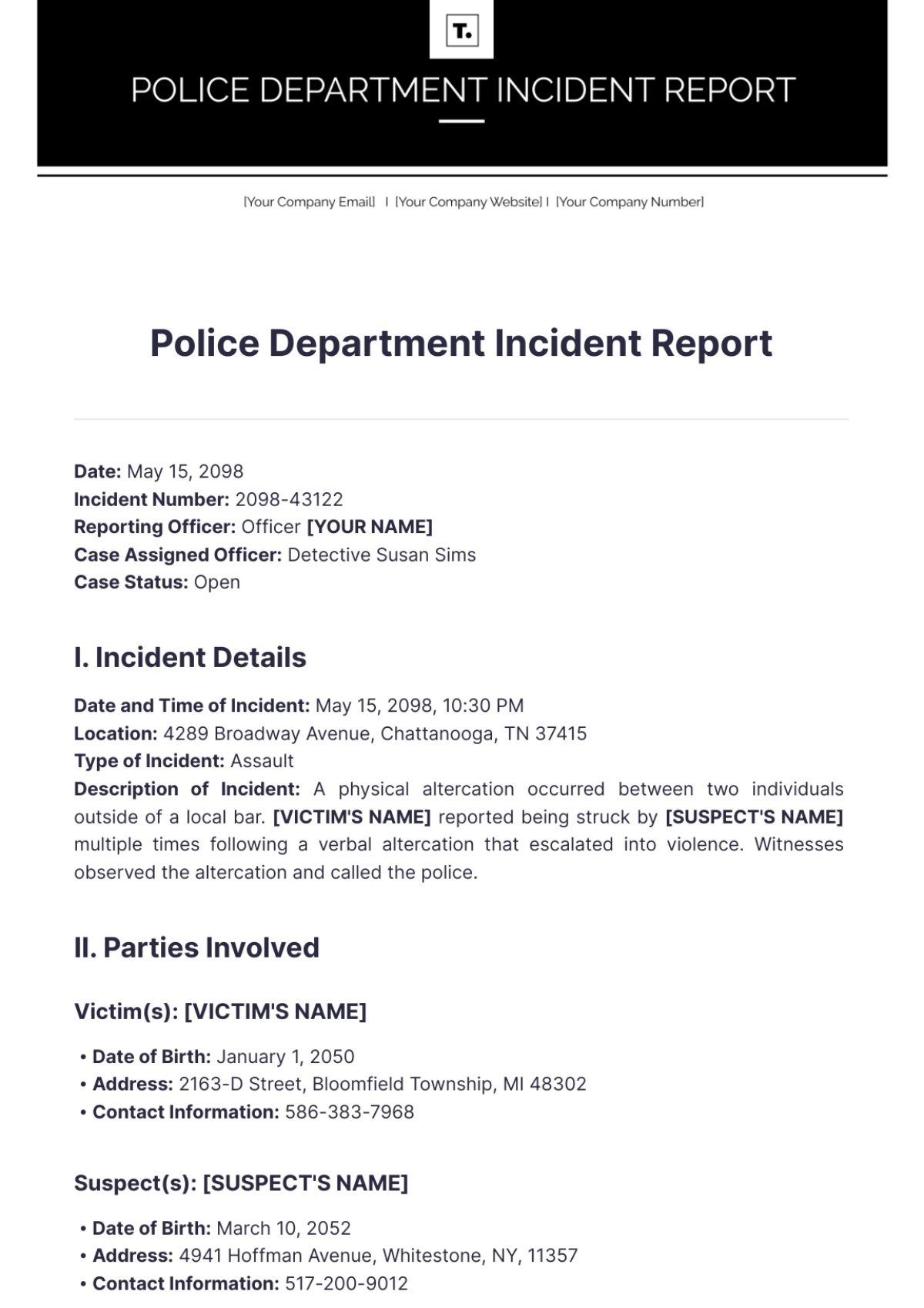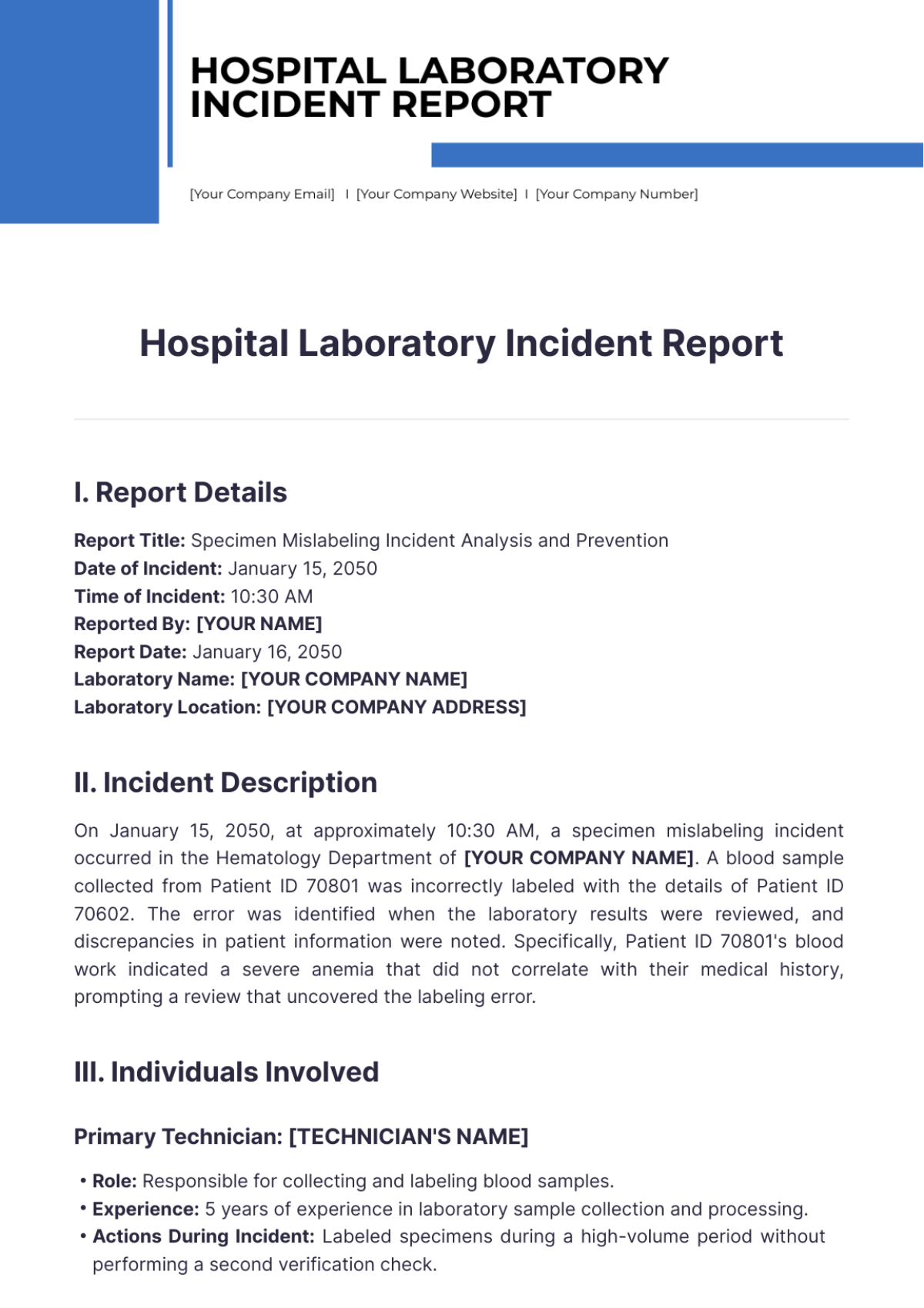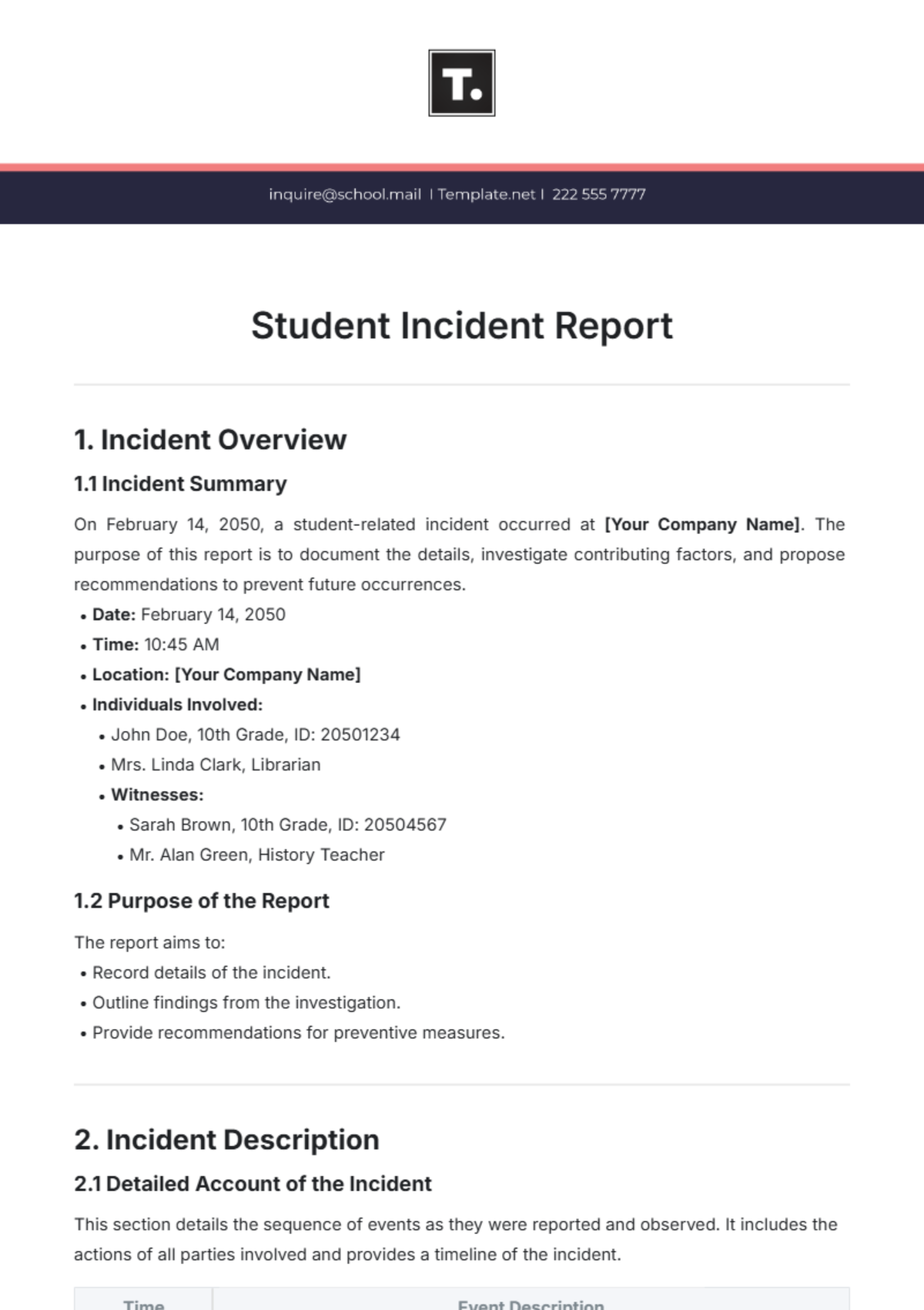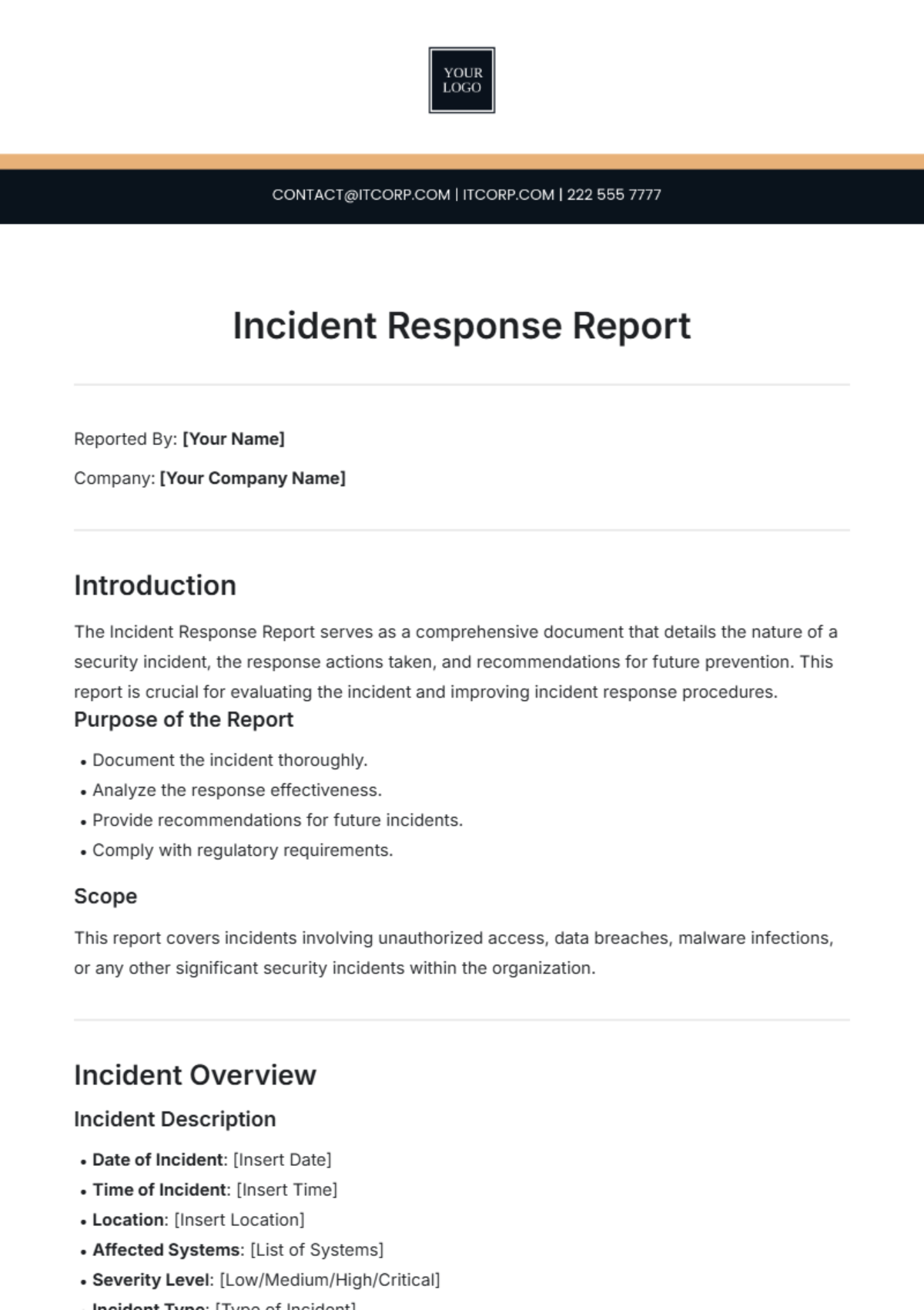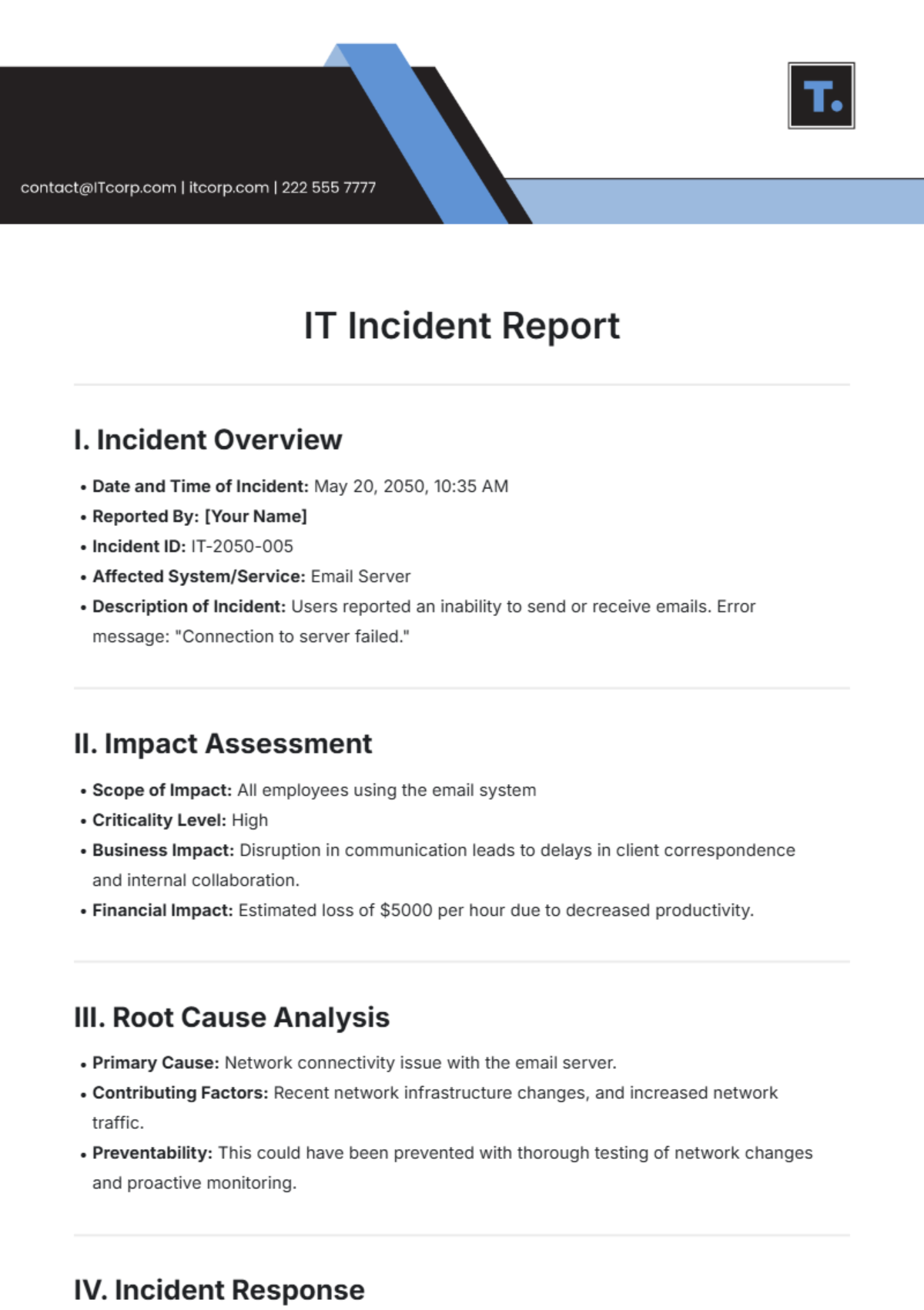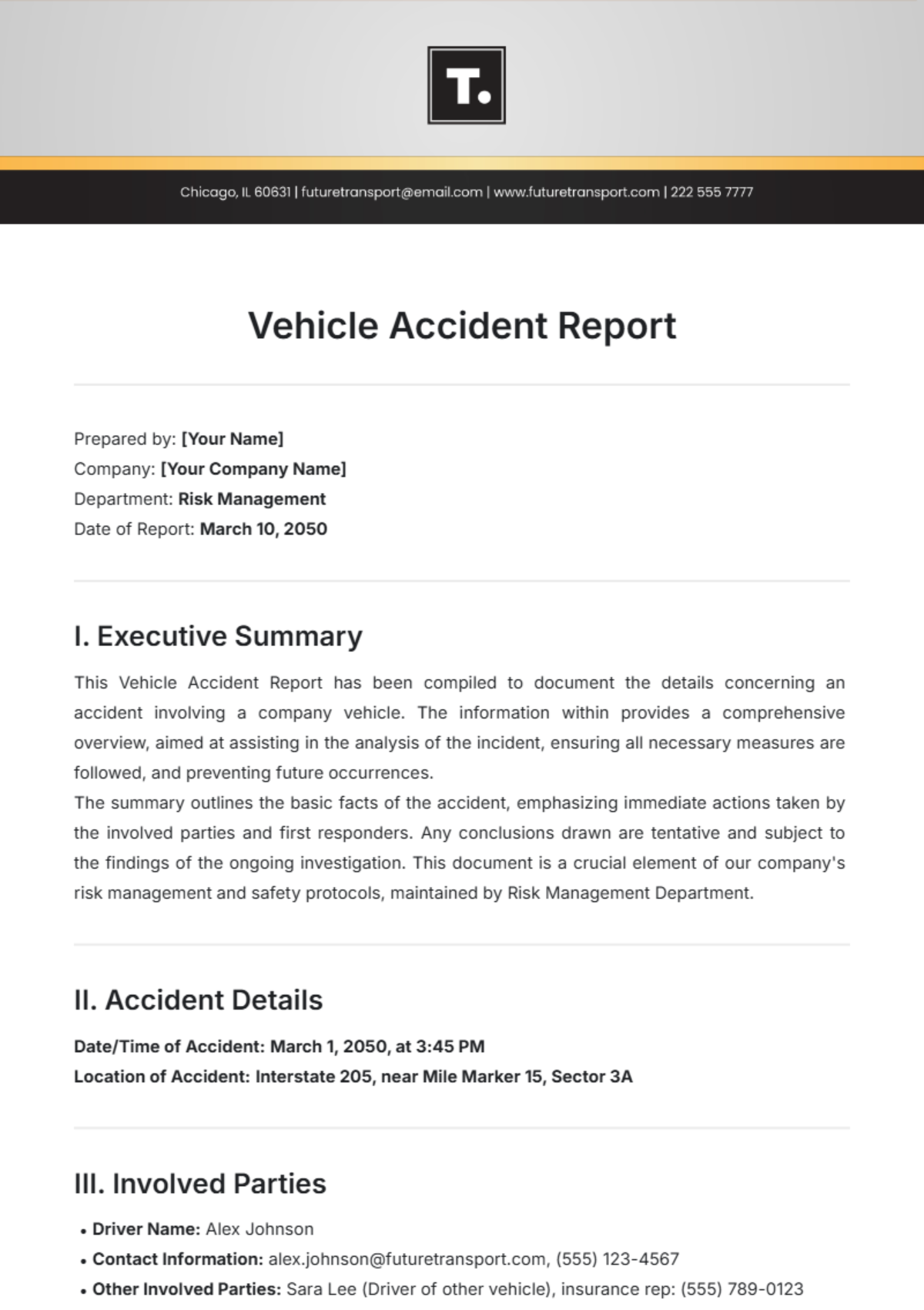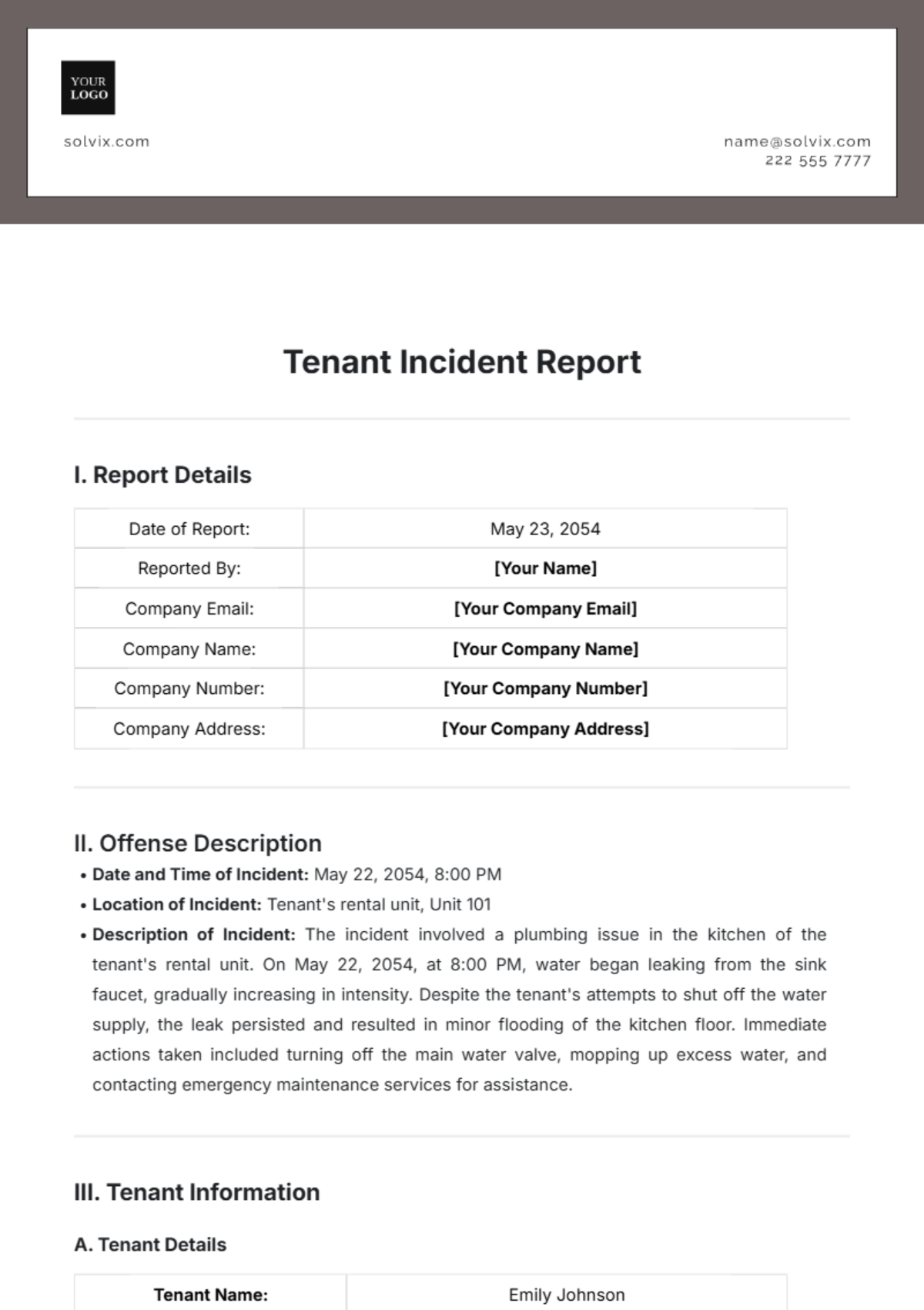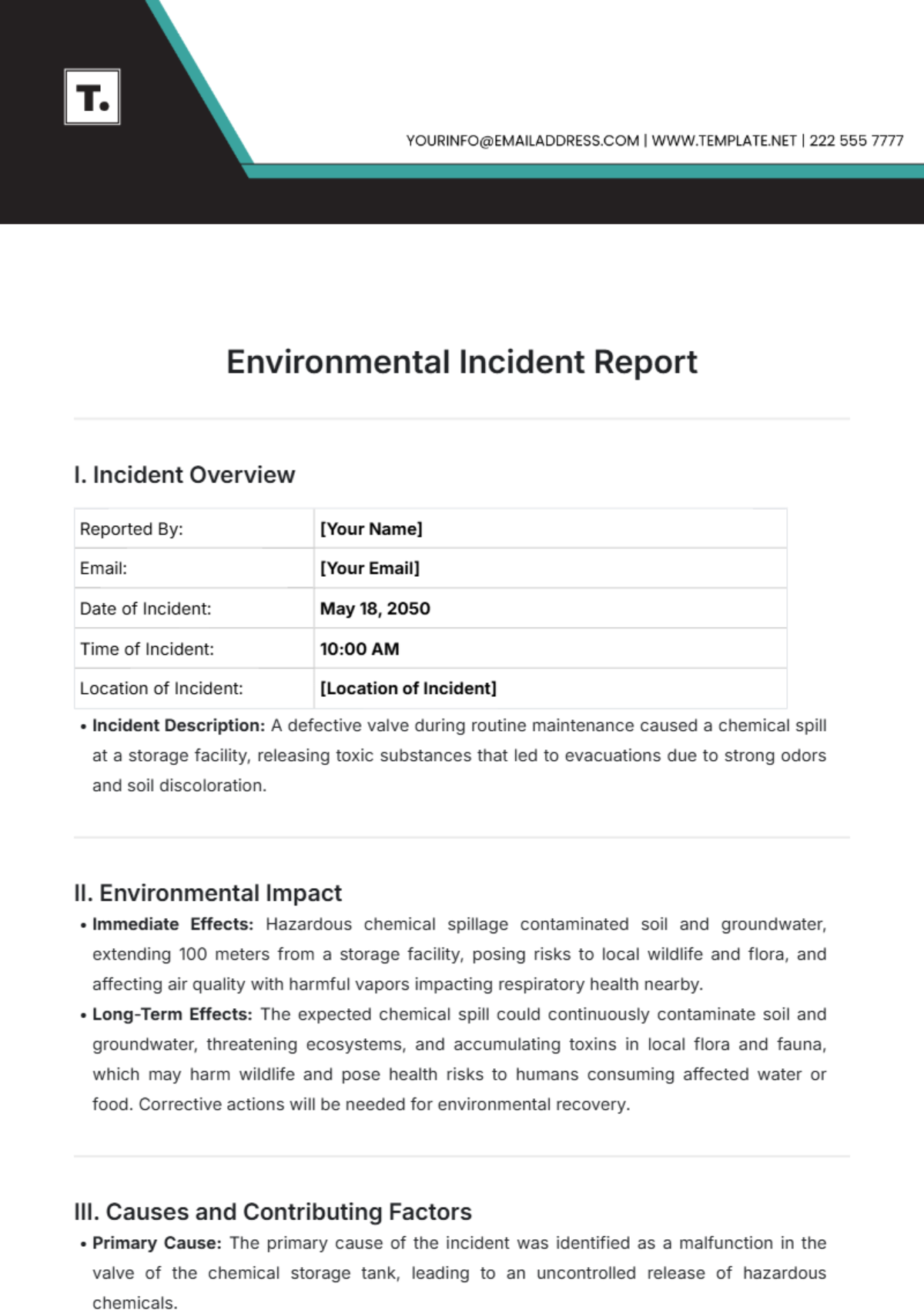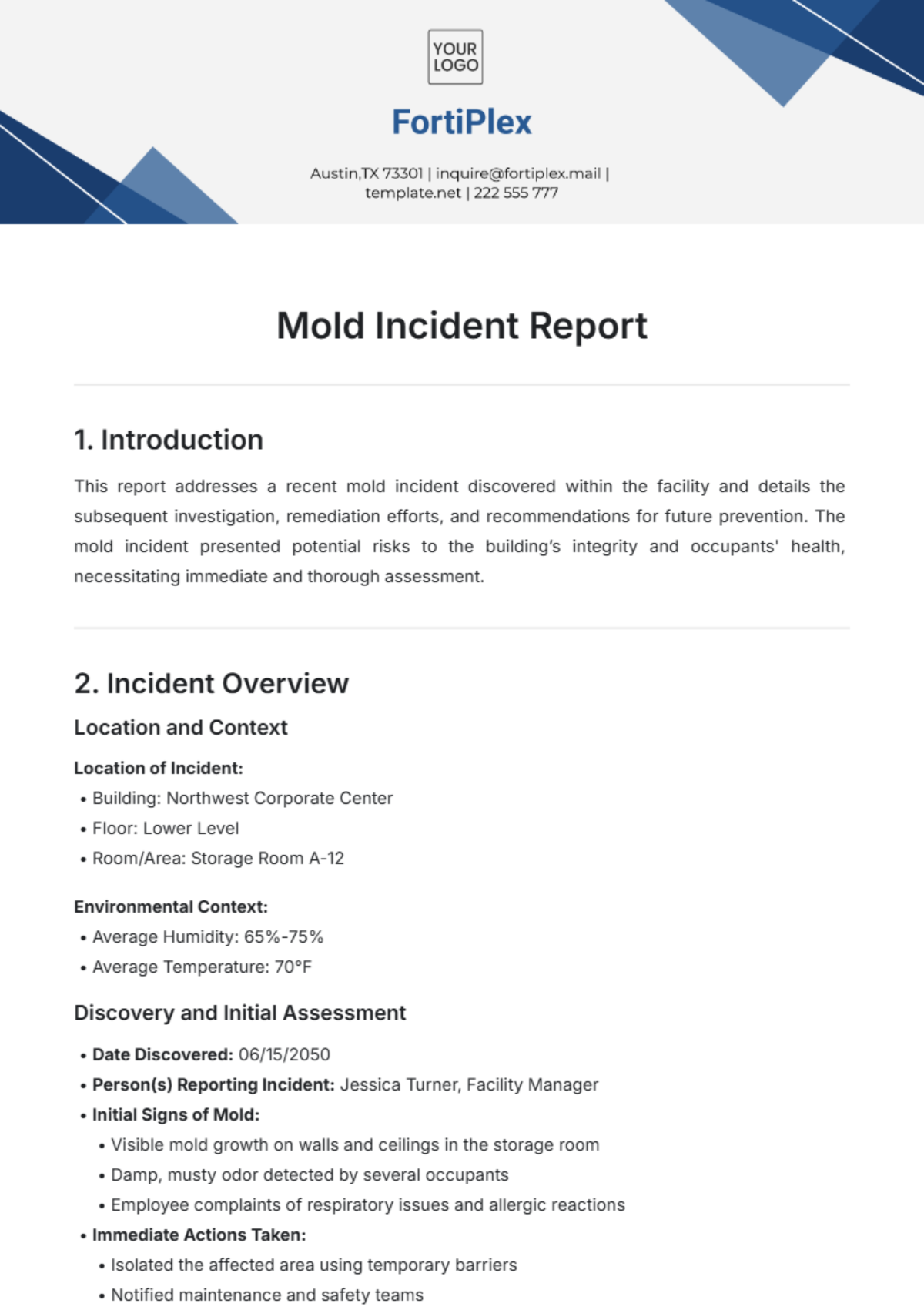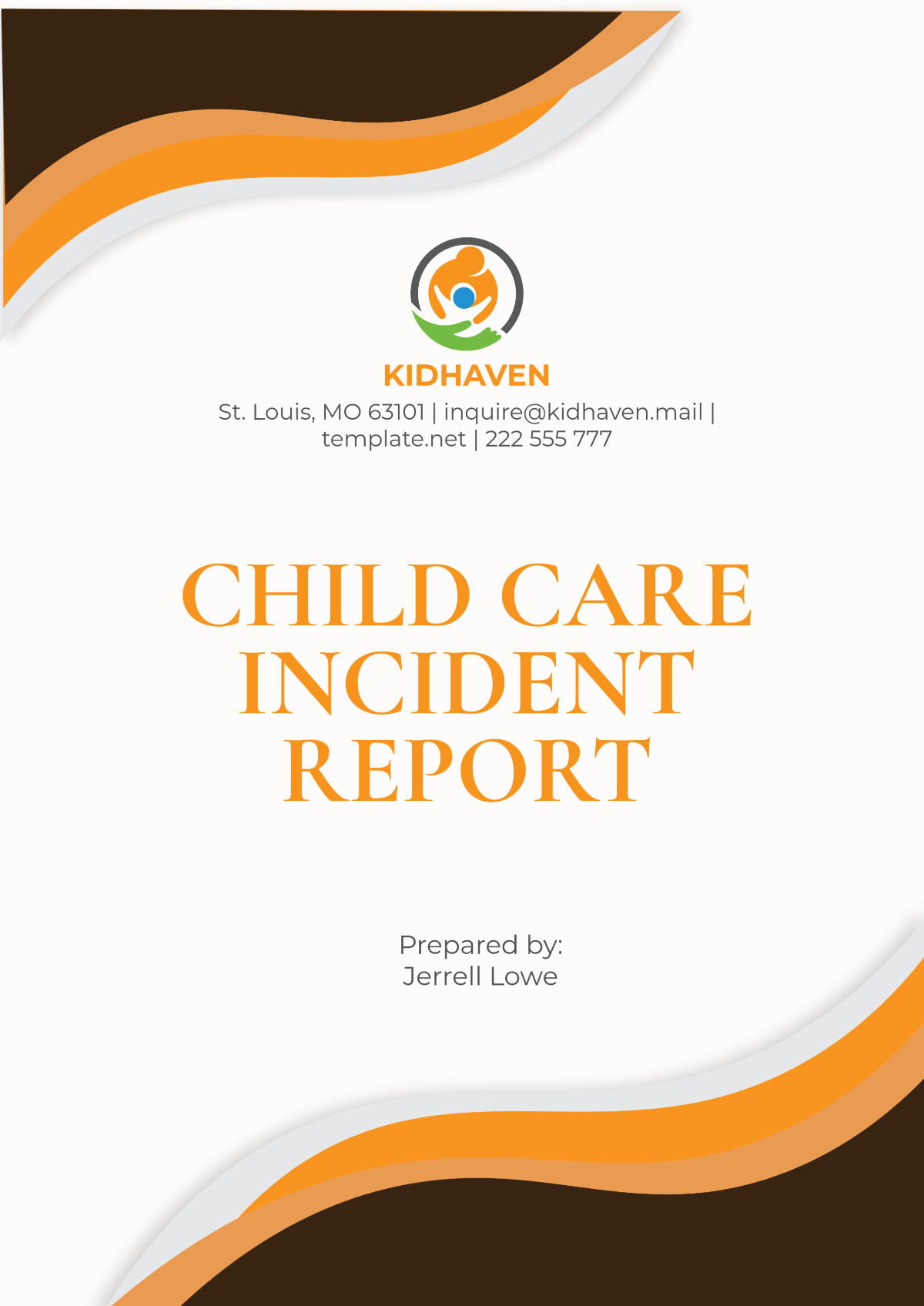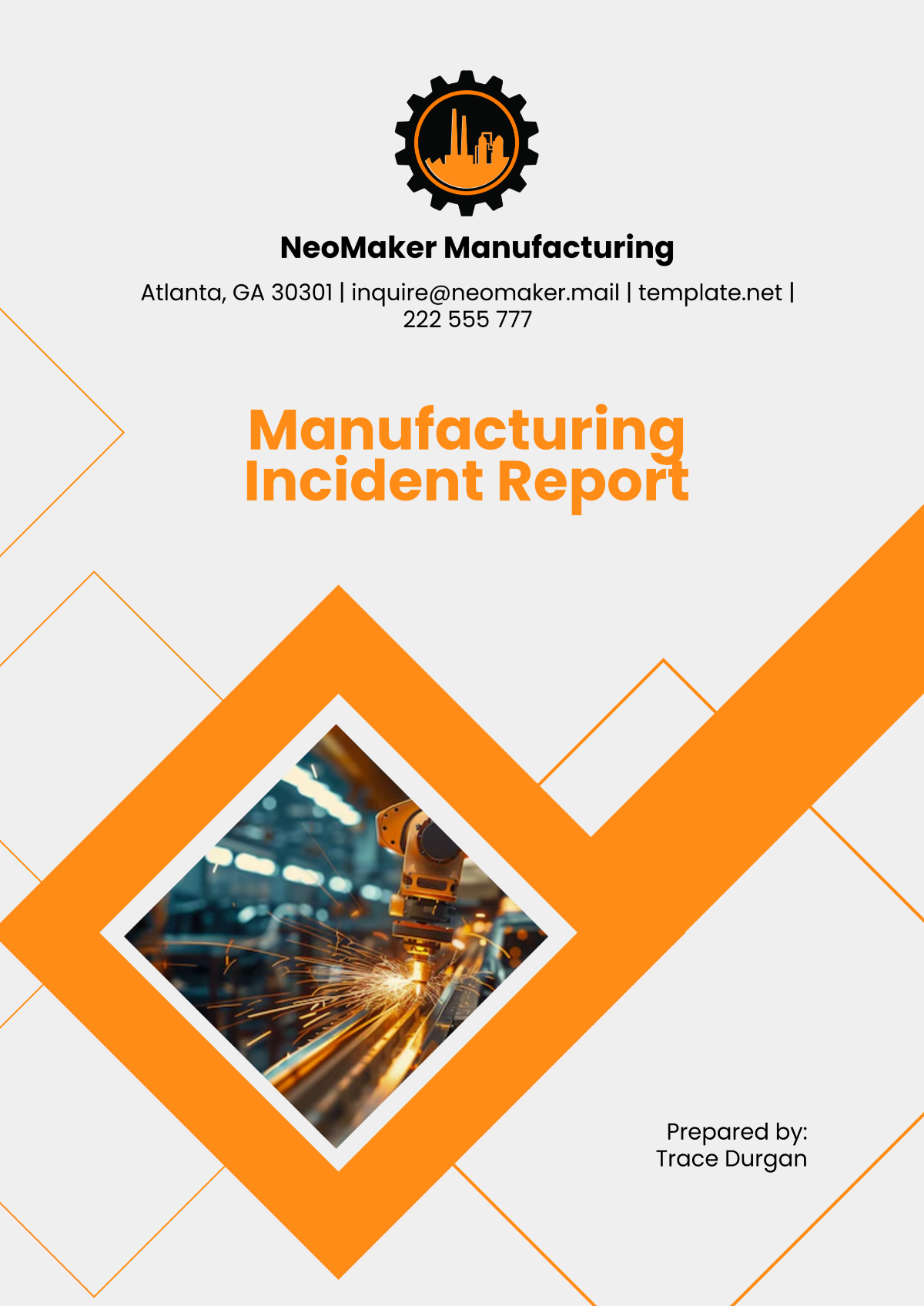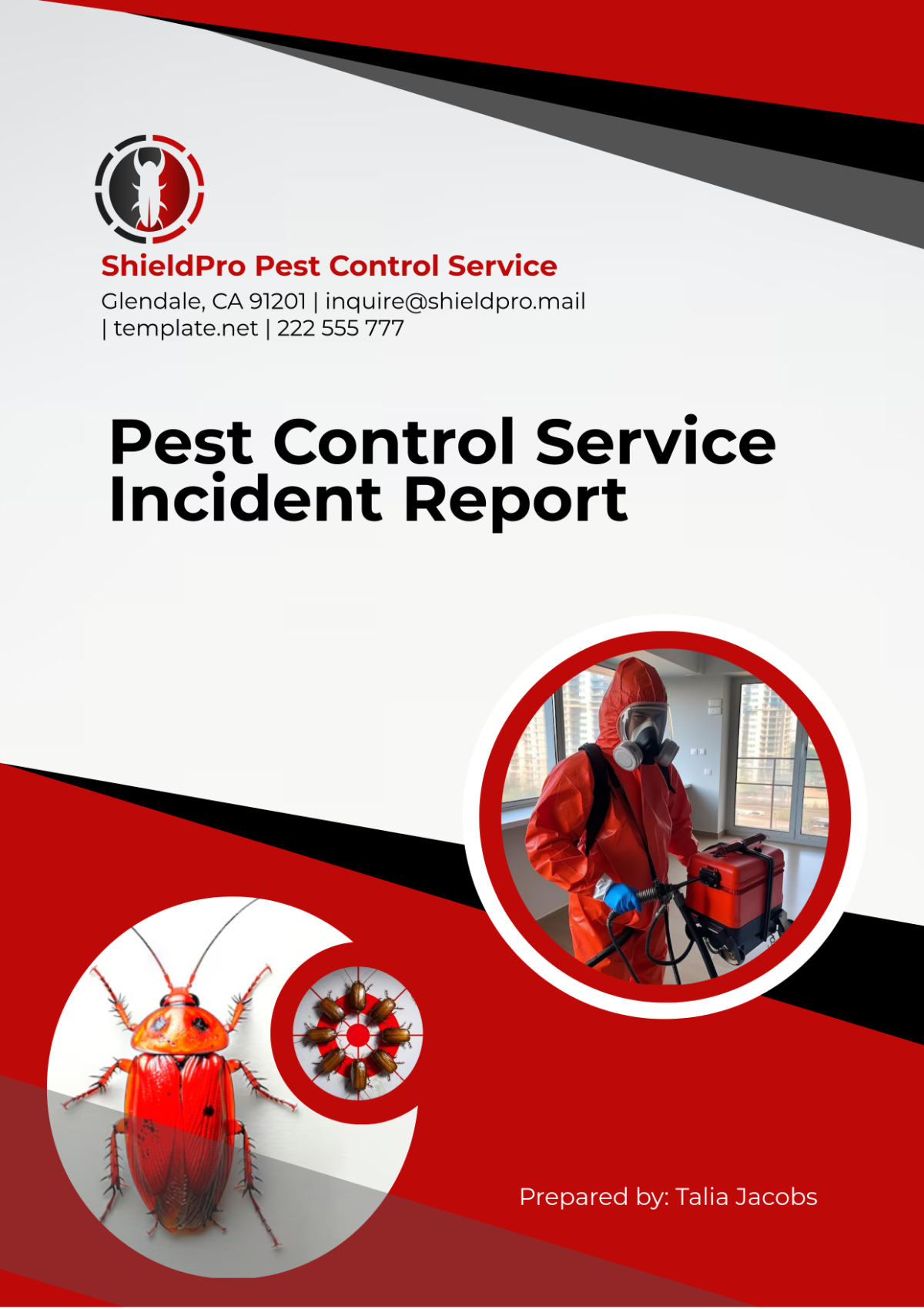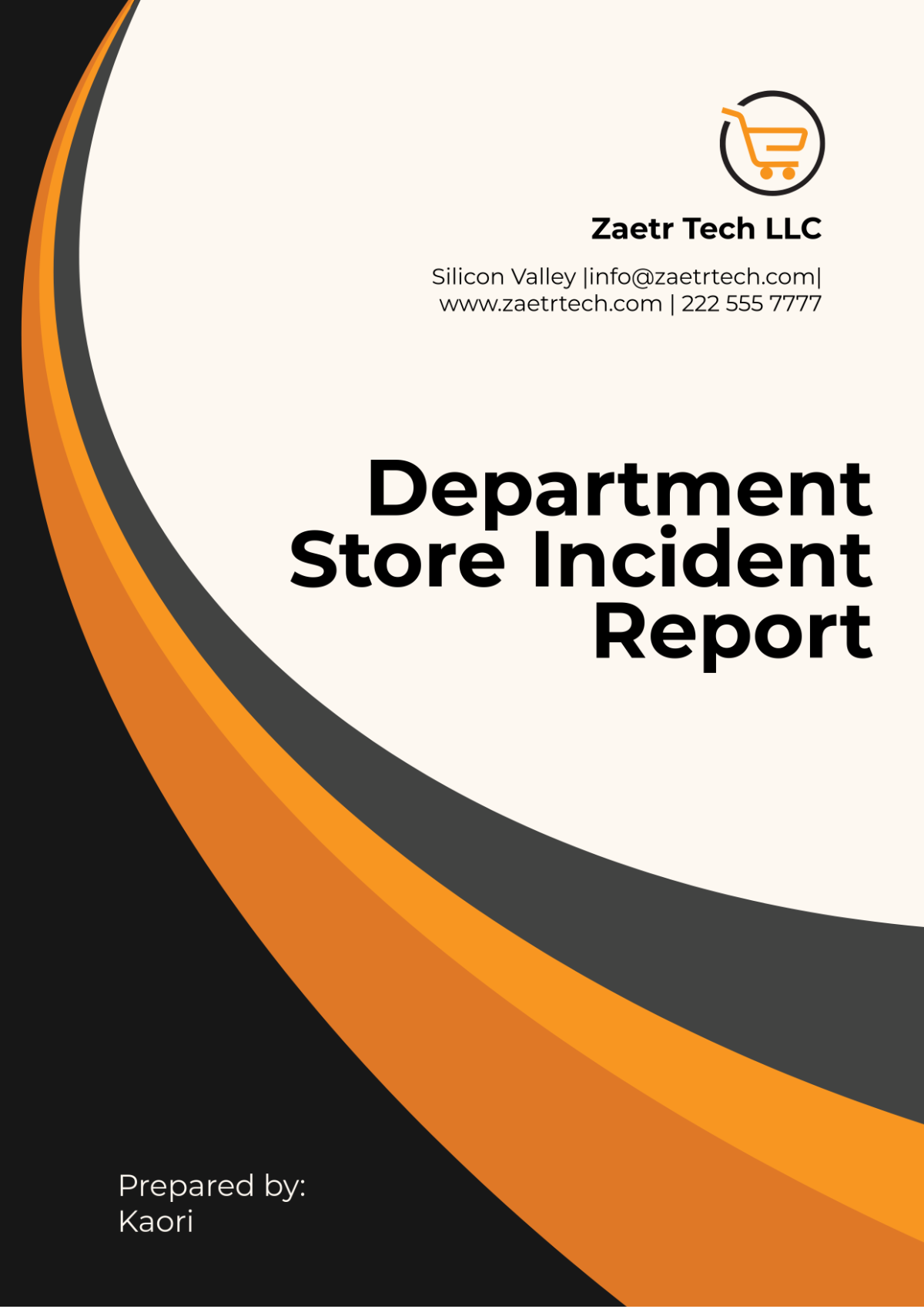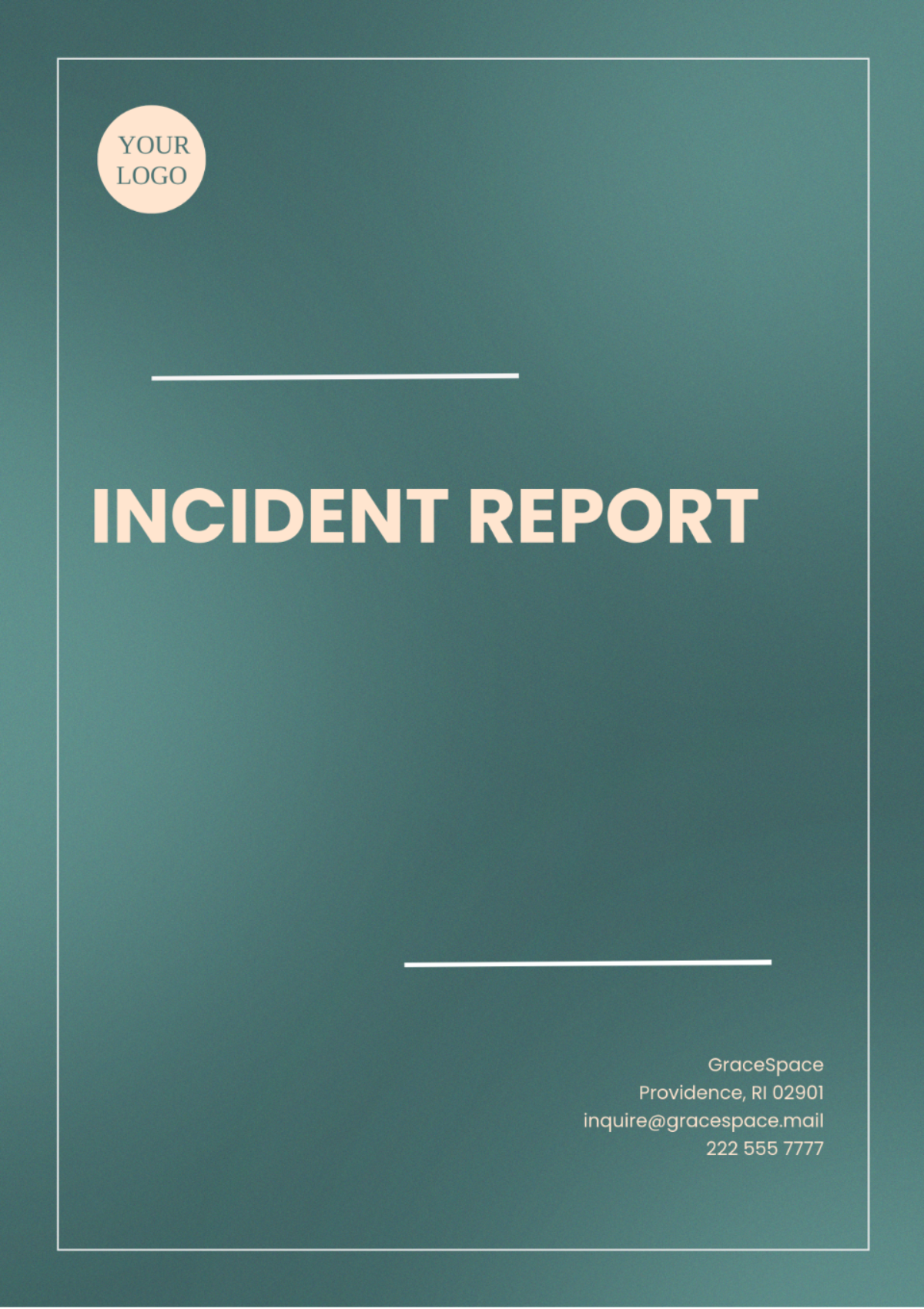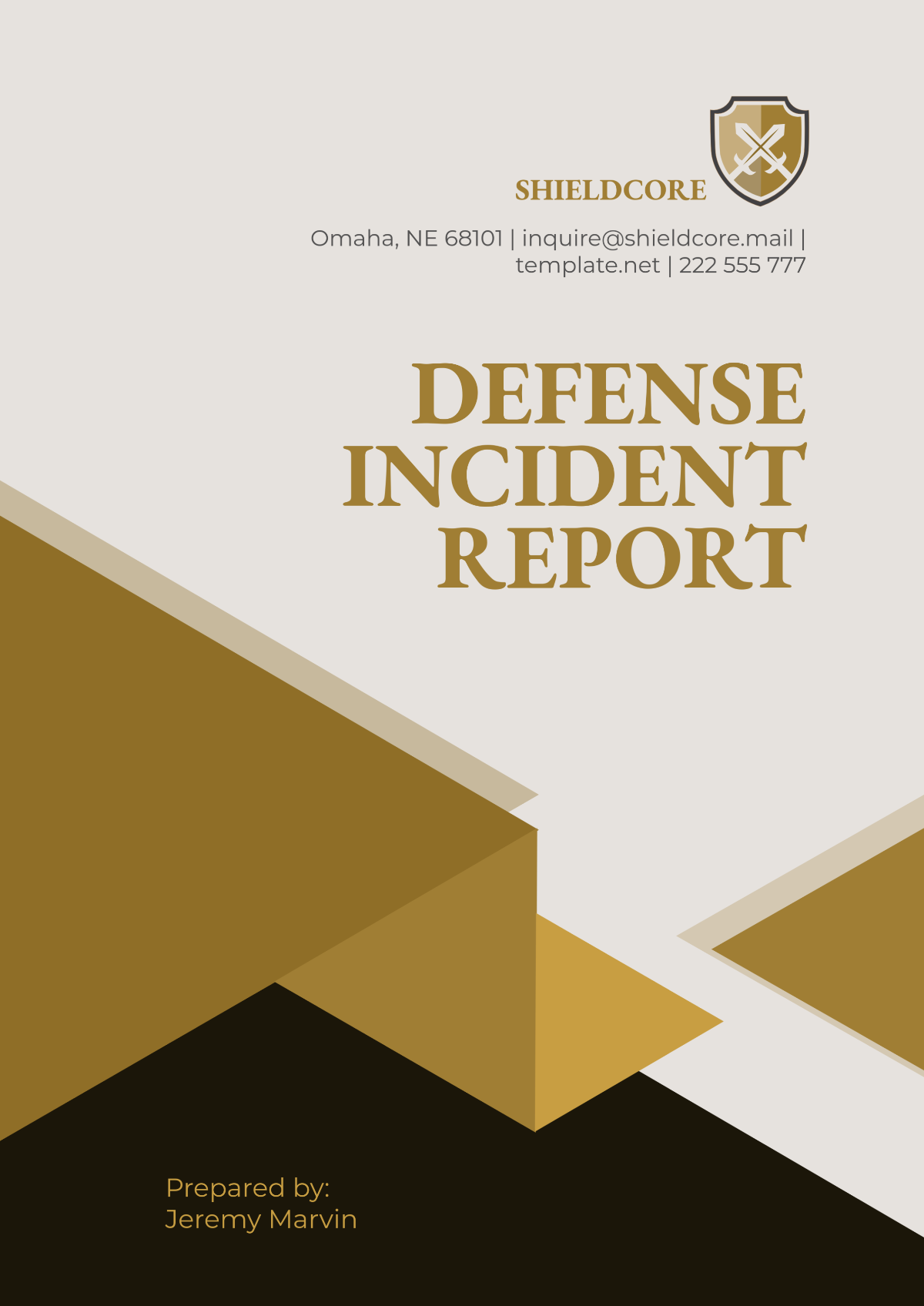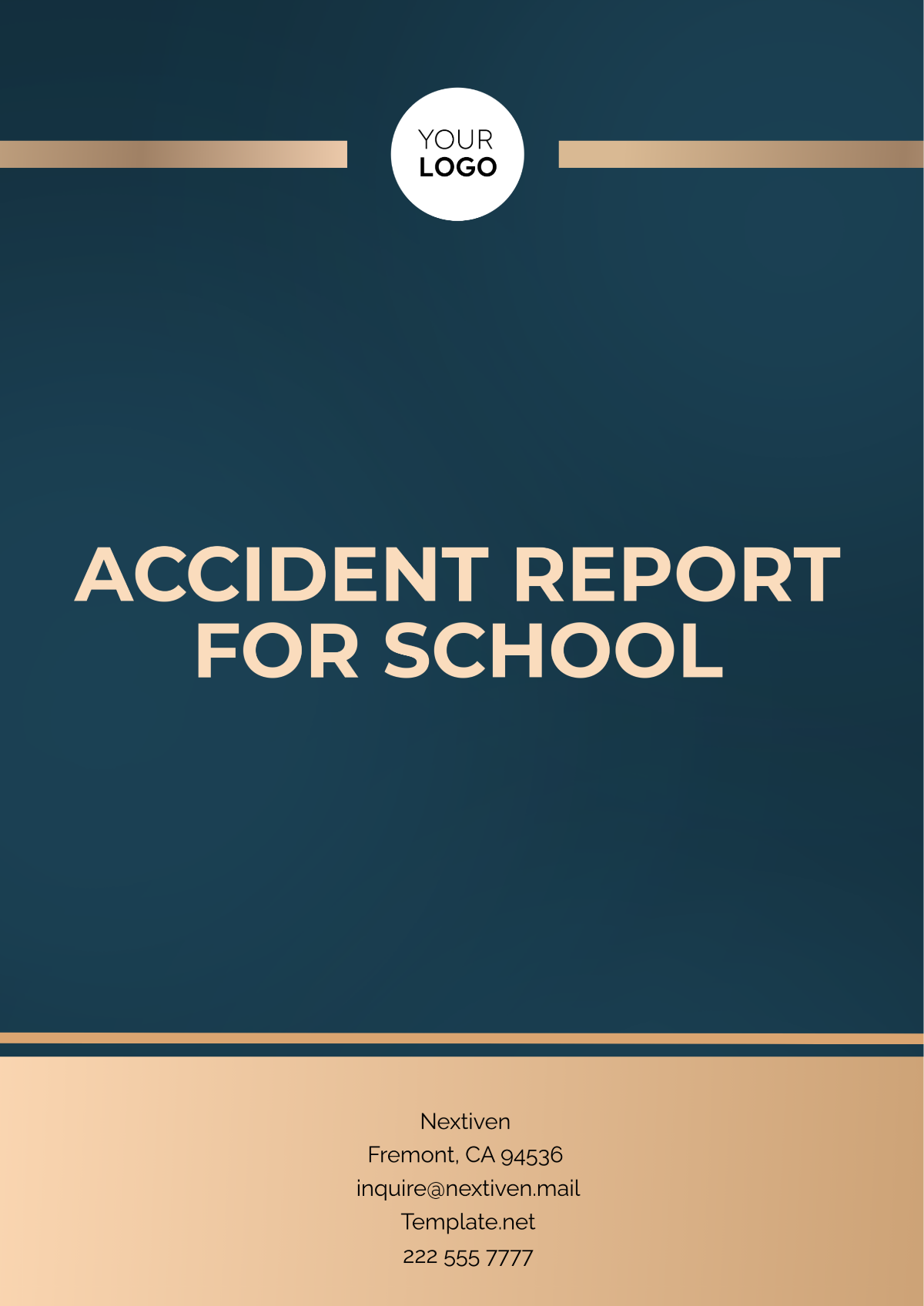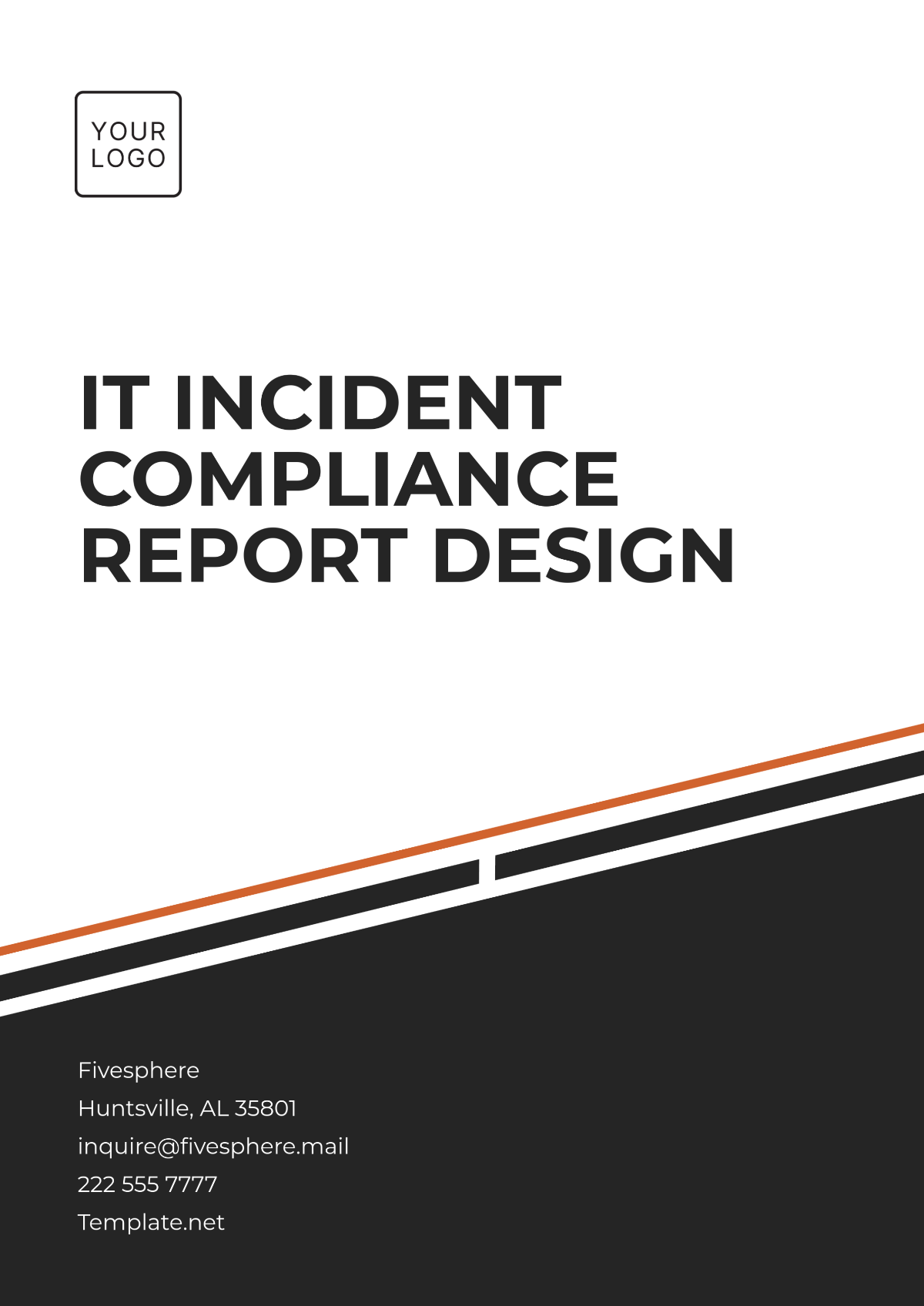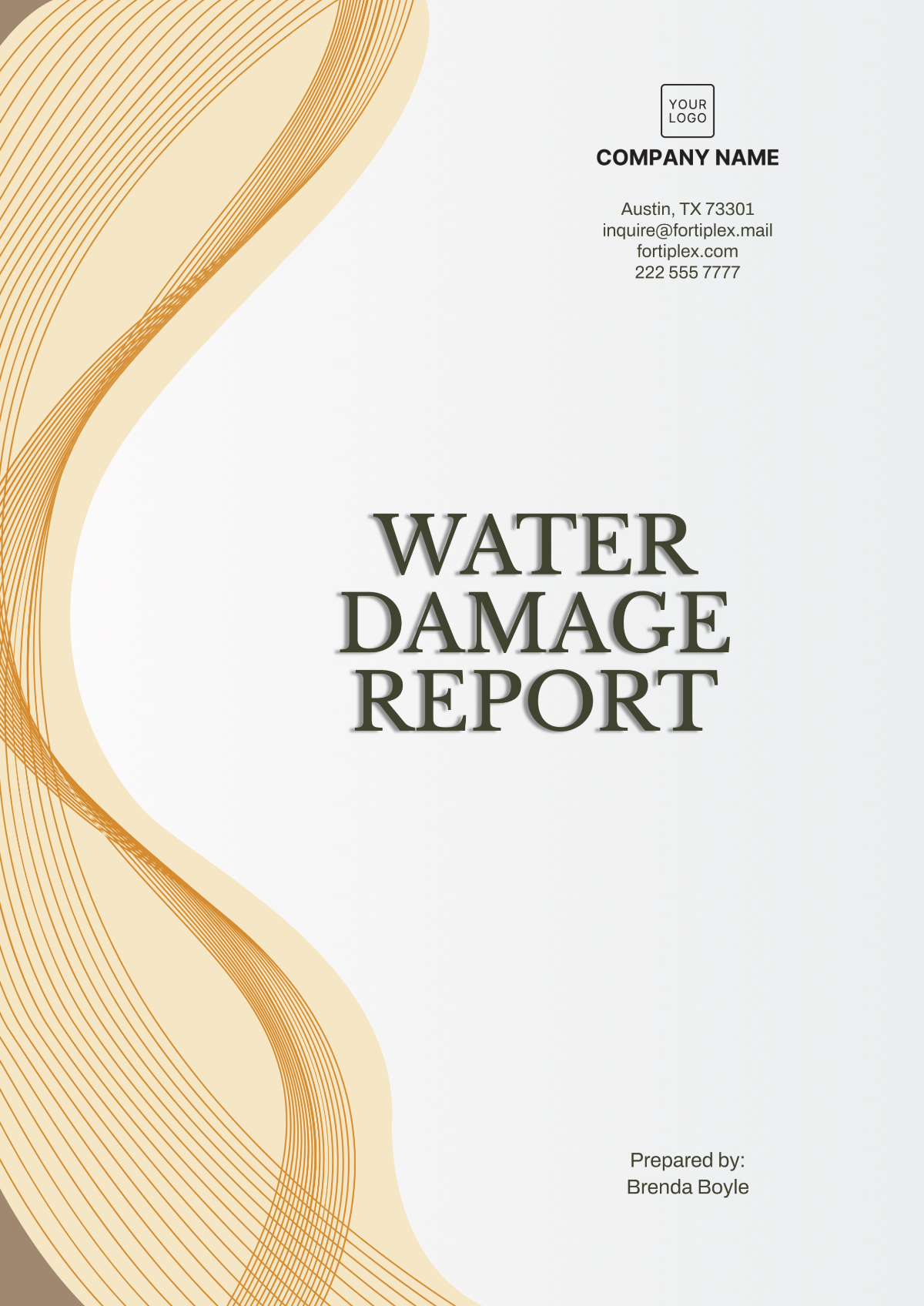IT Security Incident Report
Information | |
|---|---|
Reported By: | [Your Name], IT Systems Administrator |
Date: | May 20, 2050 |
Incident ID: | 2050-05-20-001 |
I. Summary of Incident
On May 20, 2050, at approximately 10:30 AM, abnormal network traffic was detected originating from an internal server, indicating a potential security breach. The incident affected the company's primary file server and resulted in unauthorized access to sensitive data.
II. Incident Details
Date and Time of Incident: May 20, 2050, 10:30 AM
Affected System(s) or Asset(s): File Server (FS-01)
Description of Incident:
An unauthorized user gained access to the file server through a compromised user account ("User123") with administrative privileges obtained through a phishing email. The attacker exploited a known vulnerability in an outdated software component running on the server to gain access.
Potential Impact:
The incident had the potential to compromise confidential company information, including customer data and proprietary documents. Initial assessment indicates that sensitive financial data and employee records may have been accessed.
Actions Taken:
Upon detection of the incident, the affected server was immediately disconnected from the network to contain the breach. Additionally, the compromised user account was disabled, and all active sessions were terminated to prevent further unauthorized access. Incident response team members were alerted, and forensic analysis of server logs was initiated to determine the extent of the breach.
III. Root Cause Analysis
Investigation revealed that the incident was caused by a phishing email that tricked an employee into divulging their credentials.
The compromised account was then used to gain unauthorized access to the file server. Furthermore, the outdated software component provided a foothold for the attacker to exploit.
IV. Corrective Actions Taken
All user accounts have undergone a mandatory password reset, and multi-factor authentication (MFA) has been enforced for all privileged accounts.
The outdated software component has been updated to the latest version, and regular patch management procedures have been established to ensure timely updates.
A review of user access privileges and permissions has been conducted, and unnecessary administrative rights have been revoked.
V. Security Improvements Implemented
Implementation of a comprehensive security awareness training program for all employees, focusing on identifying phishing attempts and safe computing practices.
Enhancement of network monitoring capabilities to detect and respond to anomalous behavior in real time.
Implementation of a robust incident response plan outlining clear procedures for handling security incidents and escalation protocols.
VI. Recommendations
Conduct regular vulnerability assessments and penetration testing to identify and remediate potential security weaknesses.
Establish a dedicated security operations center (SOC) to provide continuous monitoring and response to security threats.
Implement encryption measures for sensitive data stored on the file server to mitigate the risk of unauthorized access.
VII. Follow-Up Actions
Regular assessment and updating of security controls and policies is necessary to ensure that they stay aligned with the constantly evolving threats and conform to the latest industry best practices.
VIII. Lessons Learned
This incident underscores the critical importance of proactive security measures, including employee training, patch management, and access control, in safeguarding against cyber threats.
It highlights the need for continuous vigilance and adaptation to emerging security risks.
IX. Incident Closure
The incident has been successfully resolved, and all necessary measures have been implemented to prevent similar incidents in the future. Incident ID 2050-05-20-001 is now closed.
X. Appendix
Detailed timeline of the incident, including detection, response, and resolution phases.
Forensic analysis report detailing the methods and techniques used by the attacker.
Recommendations for further security enhancements based on lessons learned.
XI. Distribution
This report ought to be circulated among the members of the IT security team, the IT management, the executive leadership, and the heads of the relevant departments.
XII. Confidentiality Notice
This report includes confidential information and should solely be circulated among individuals who are authorized to access it. Distributing this report to individuals who have not been granted authorization is strictly prohibited.
